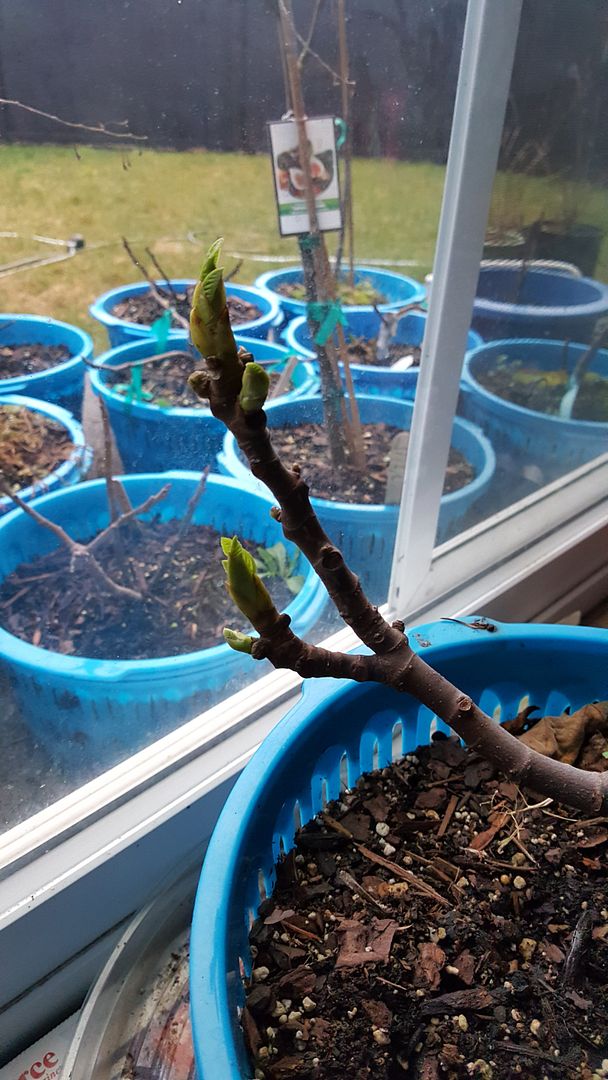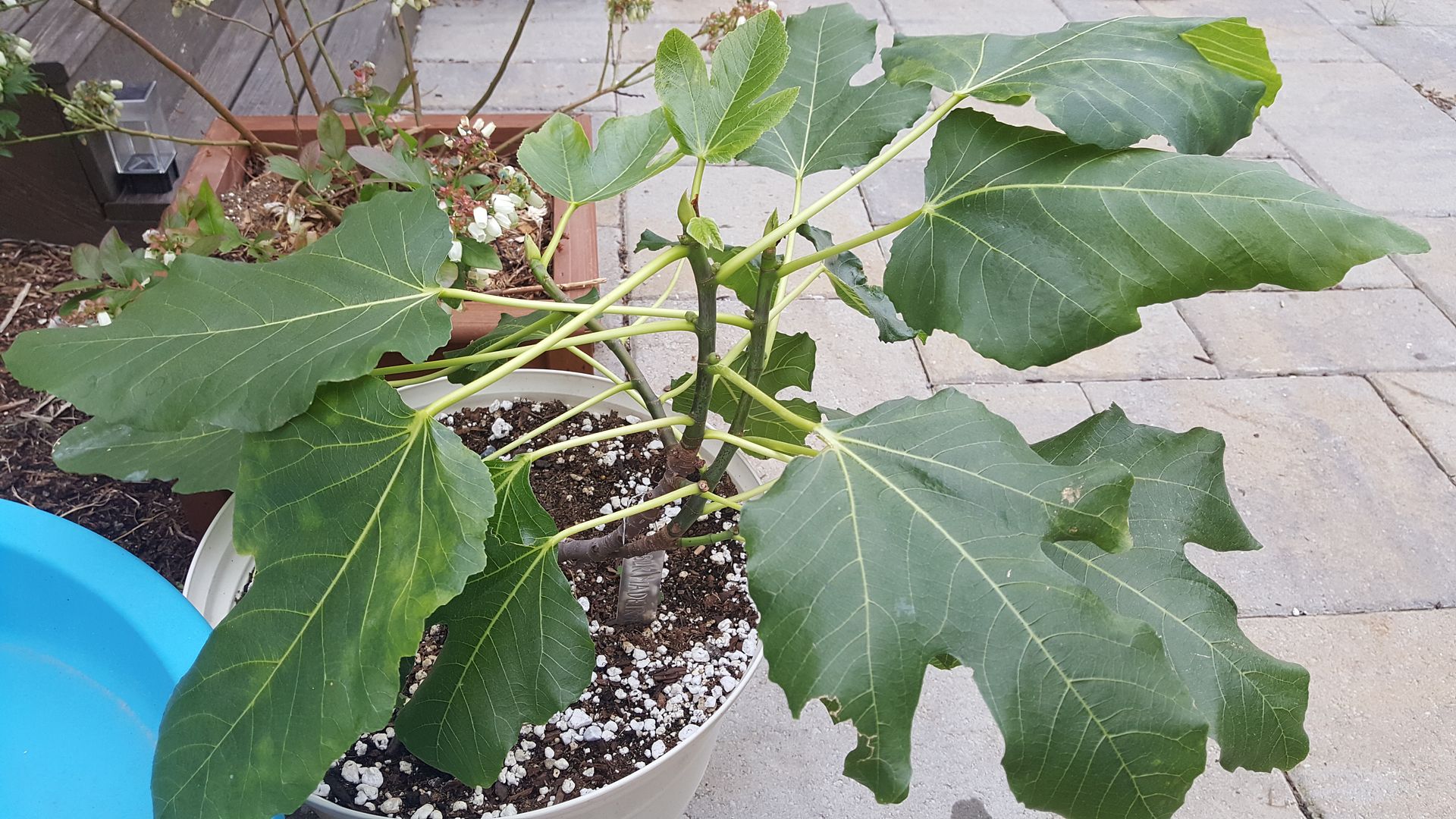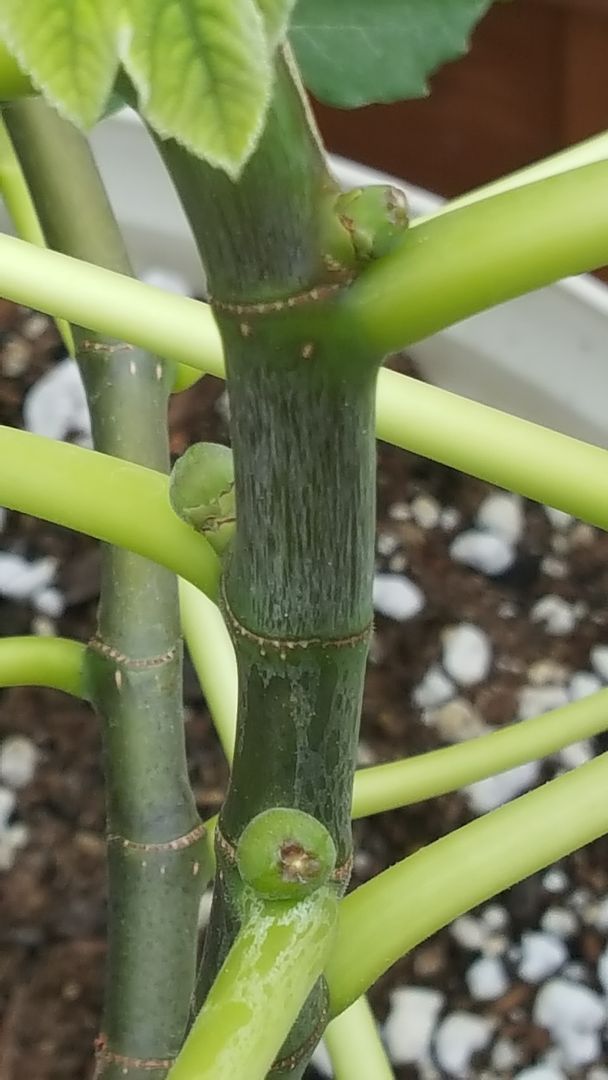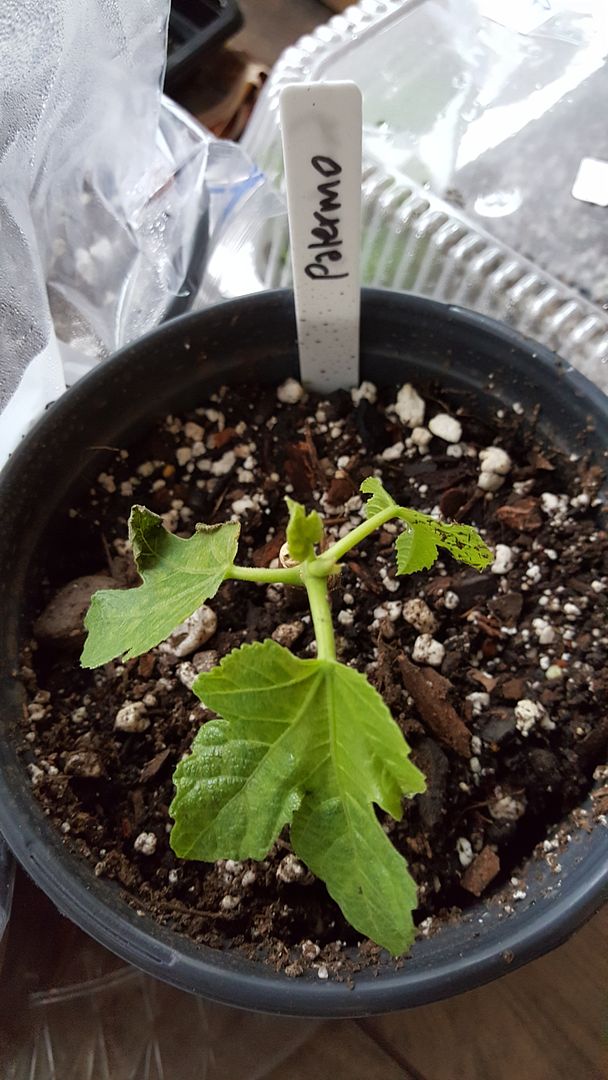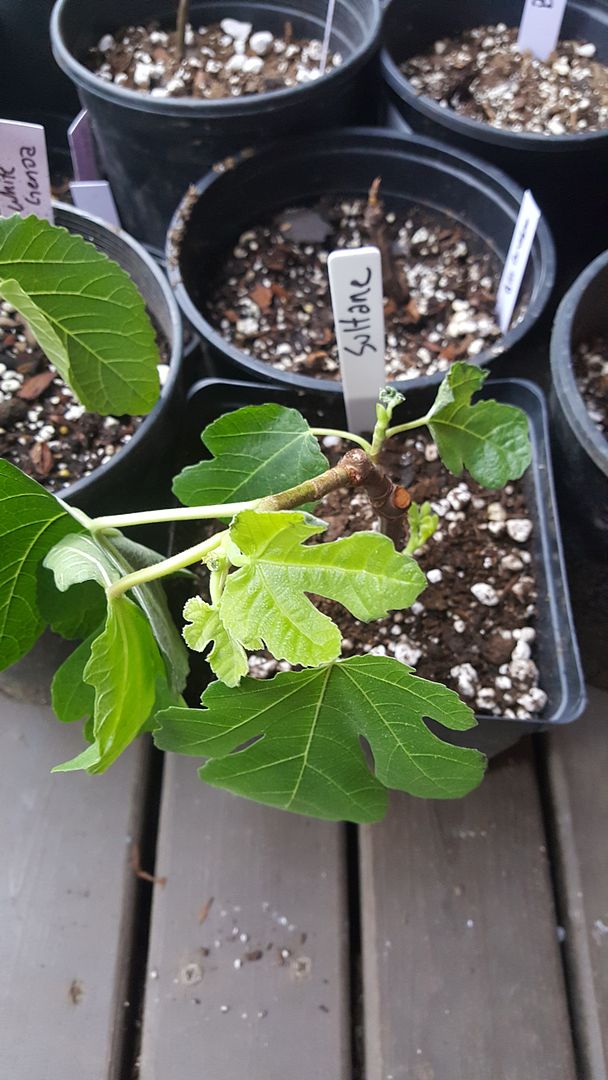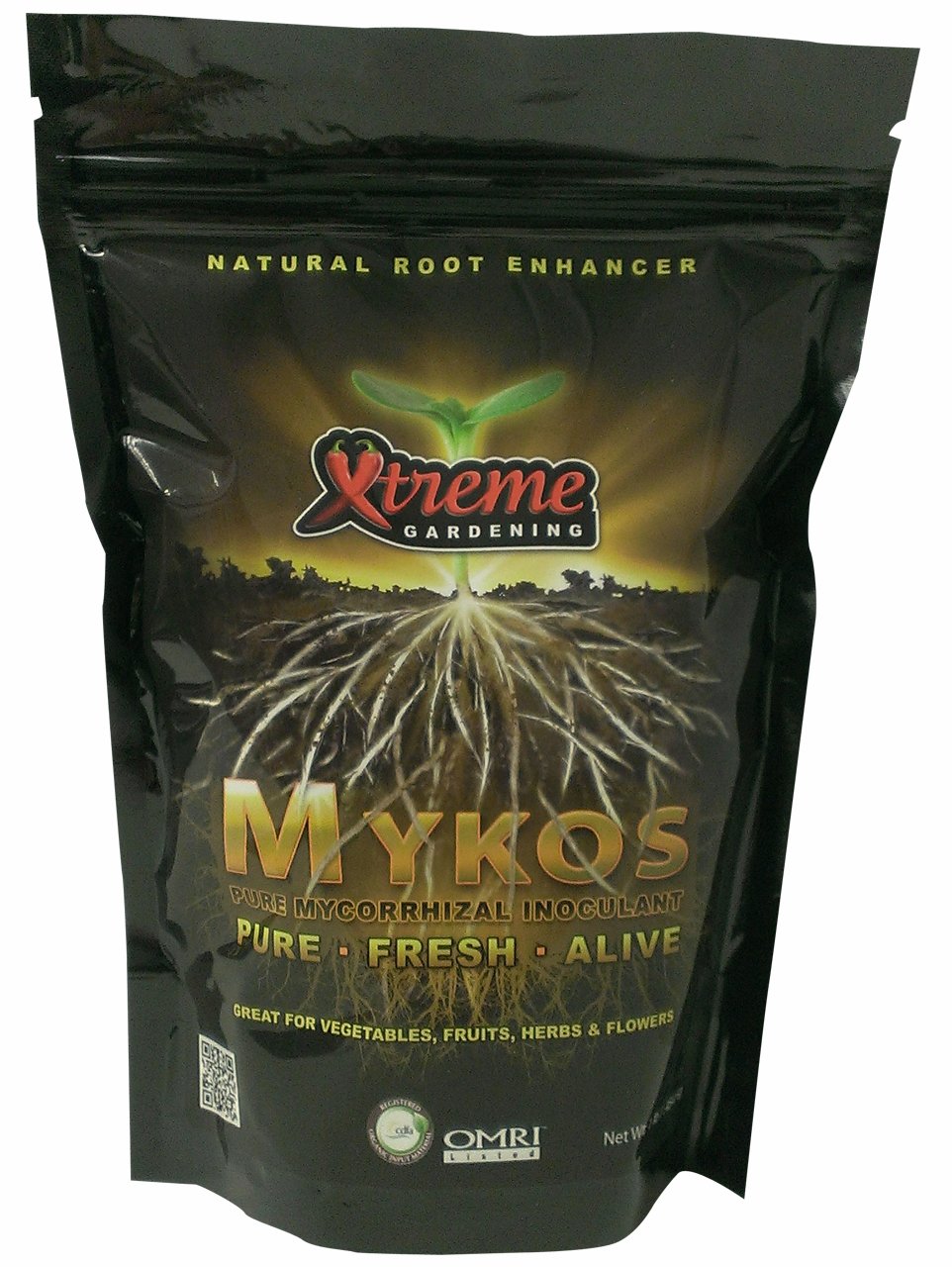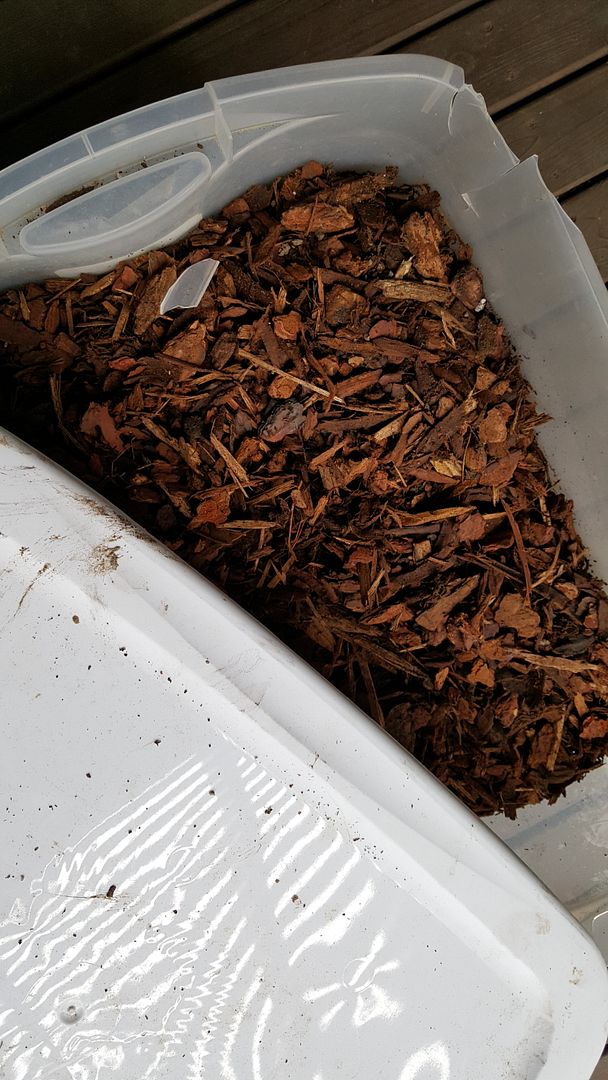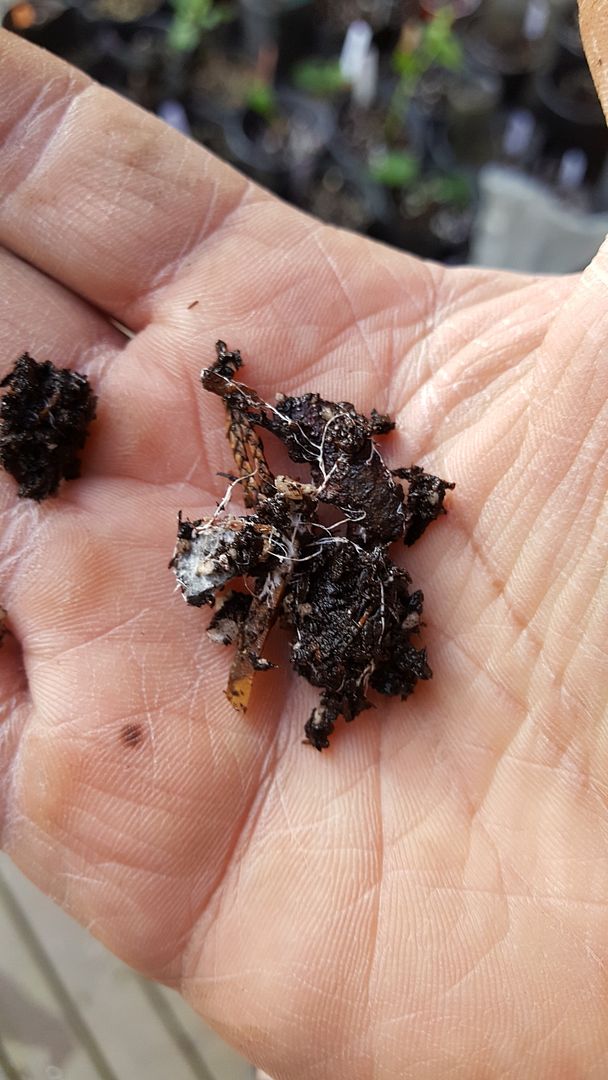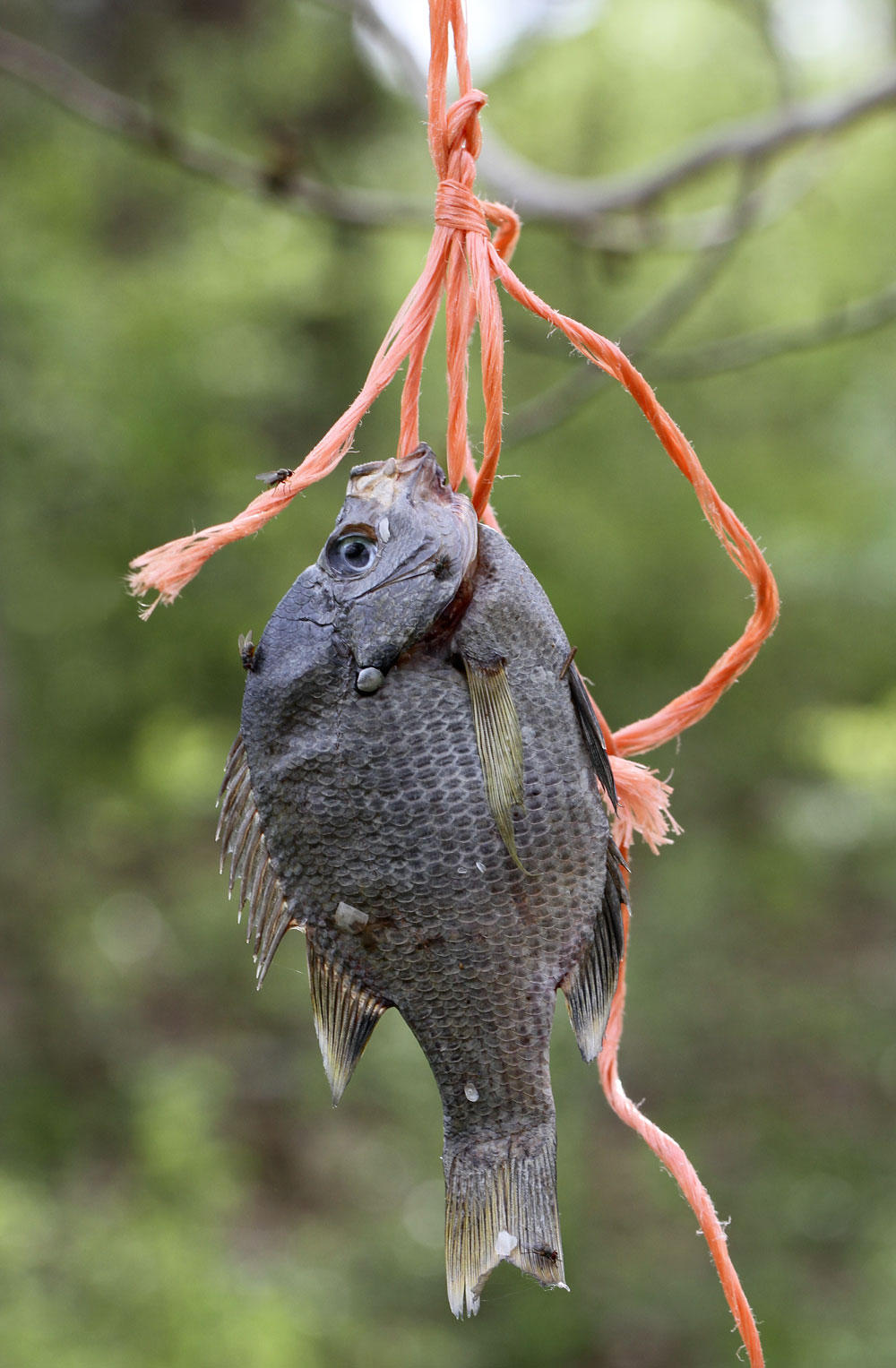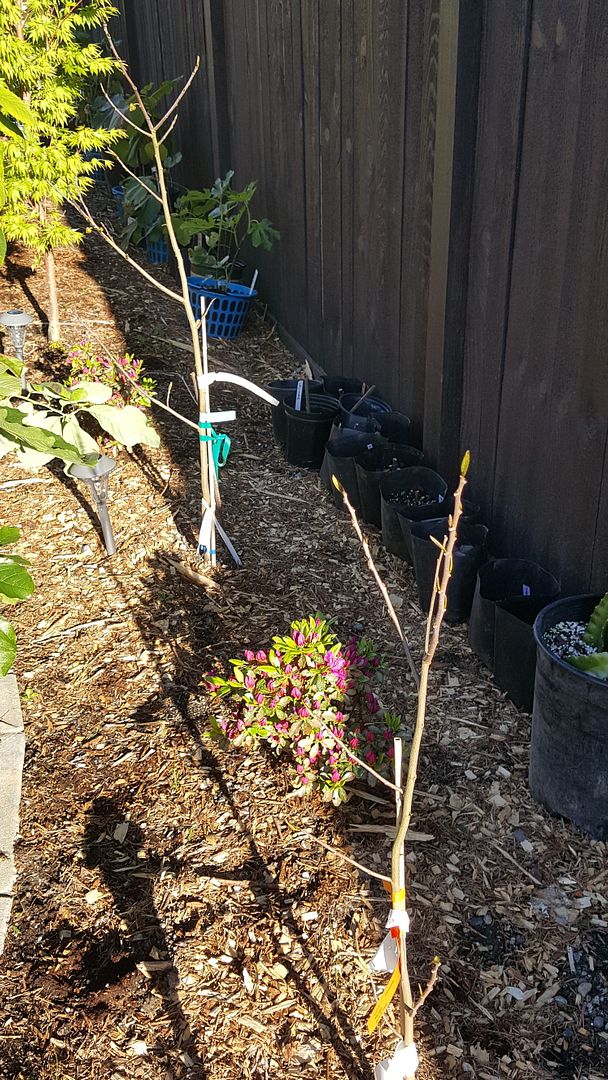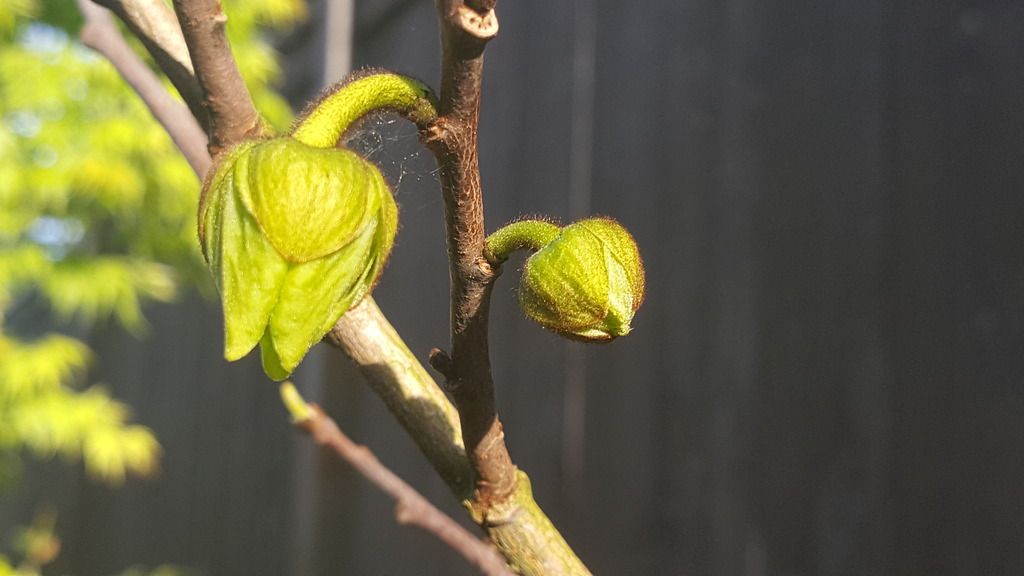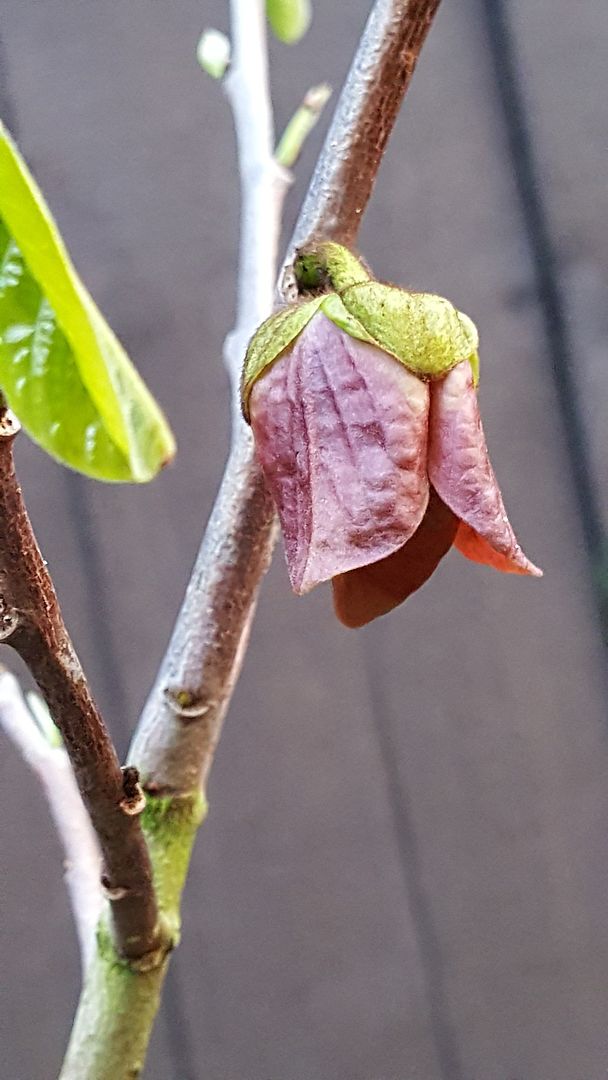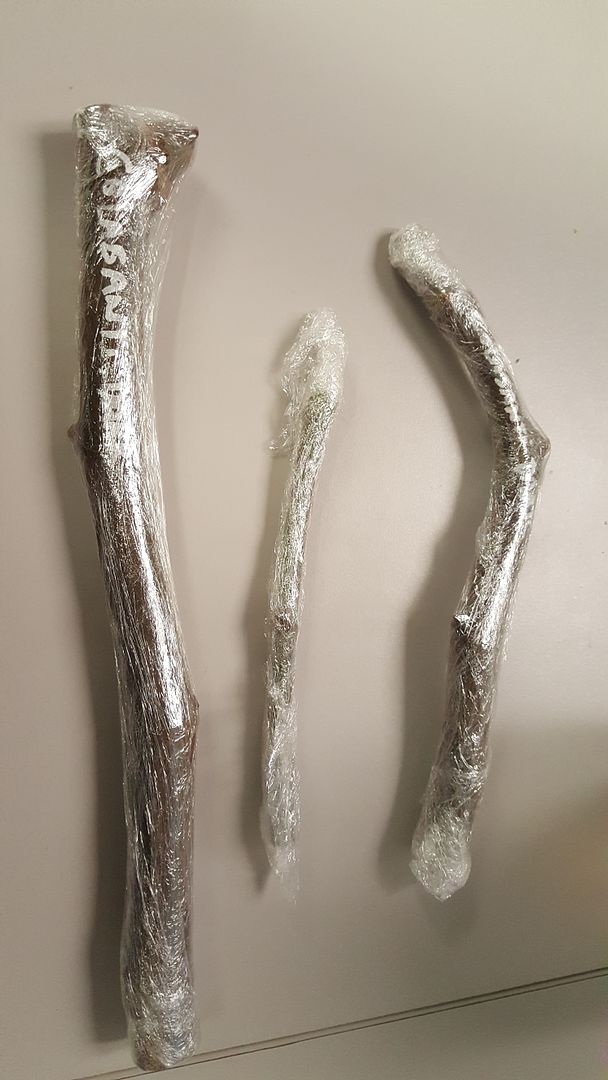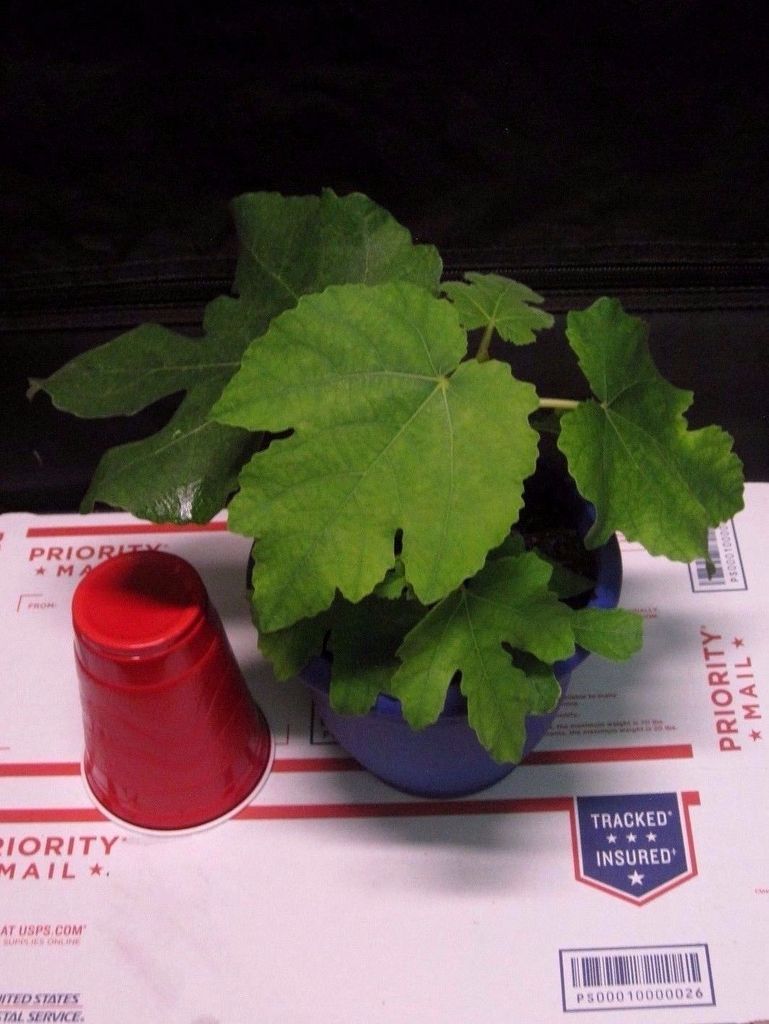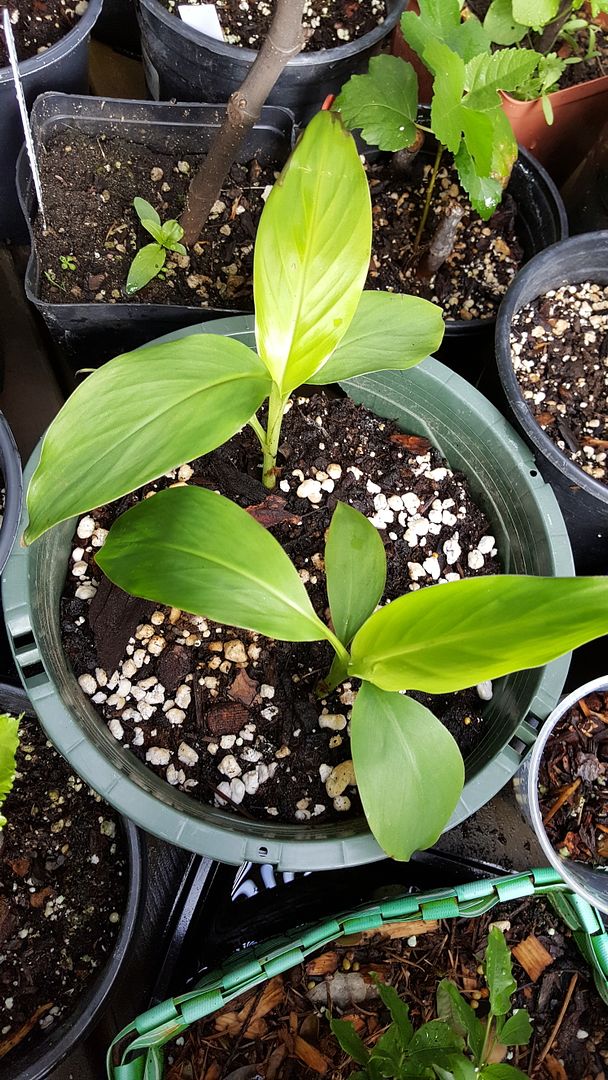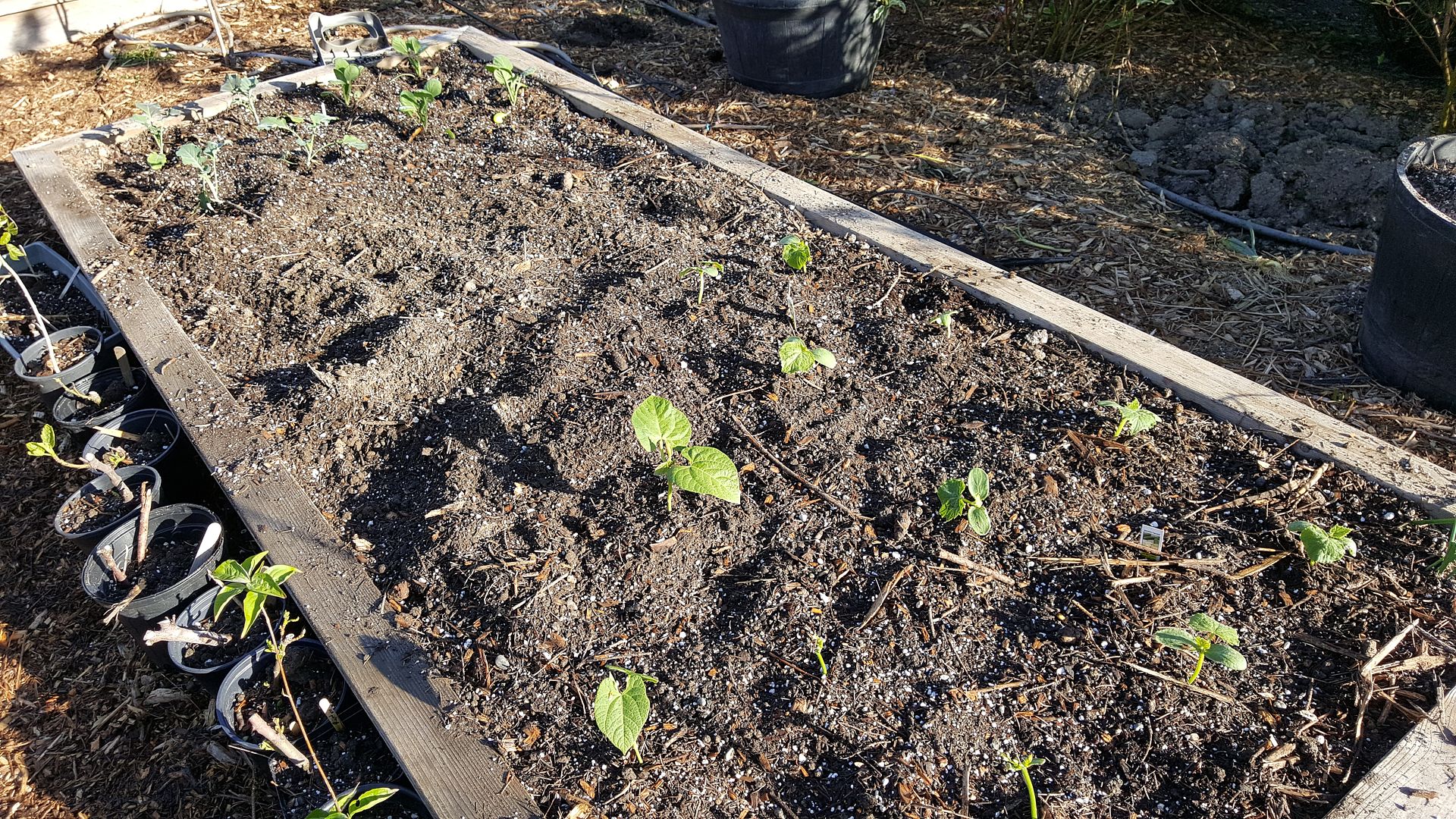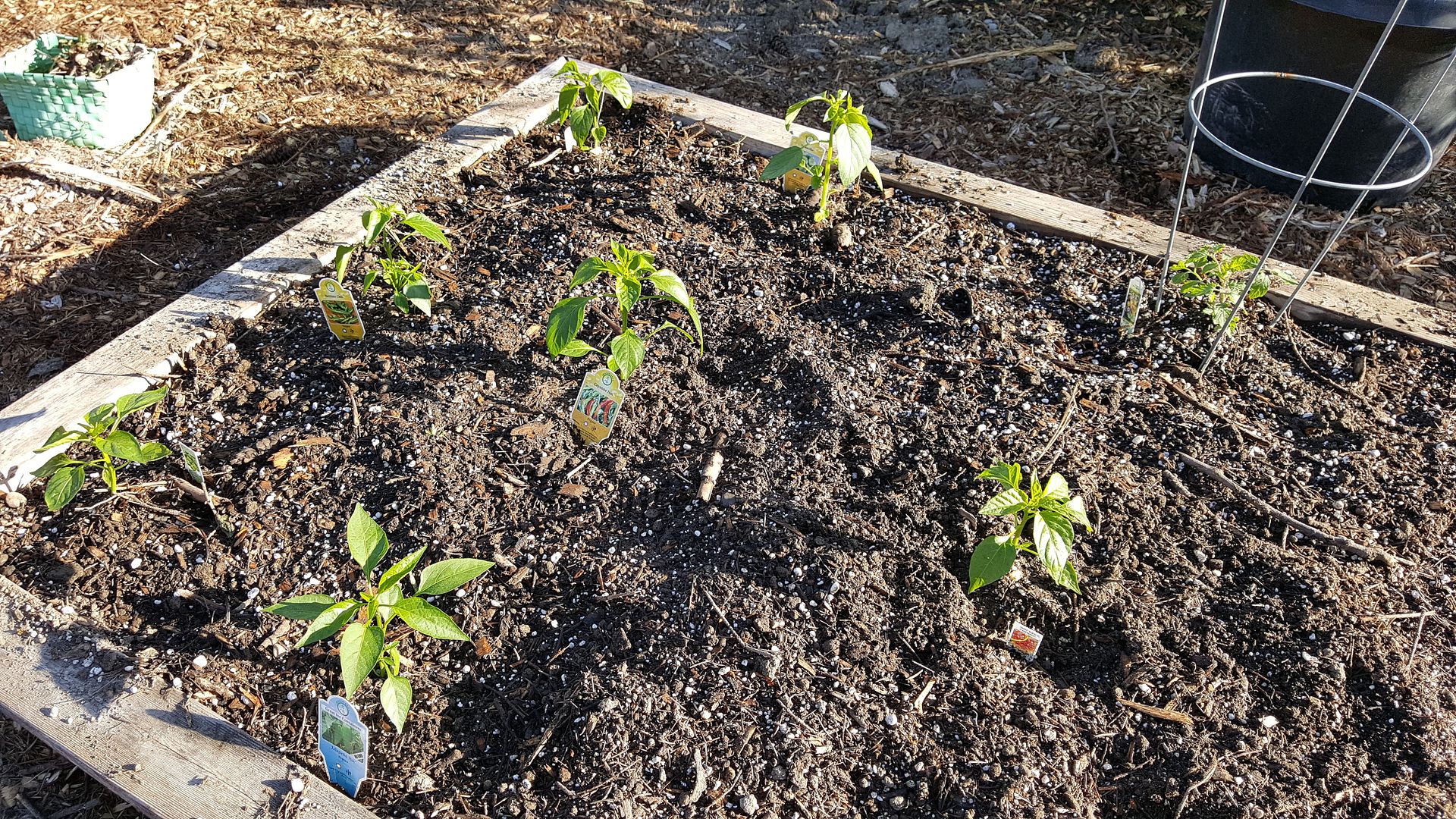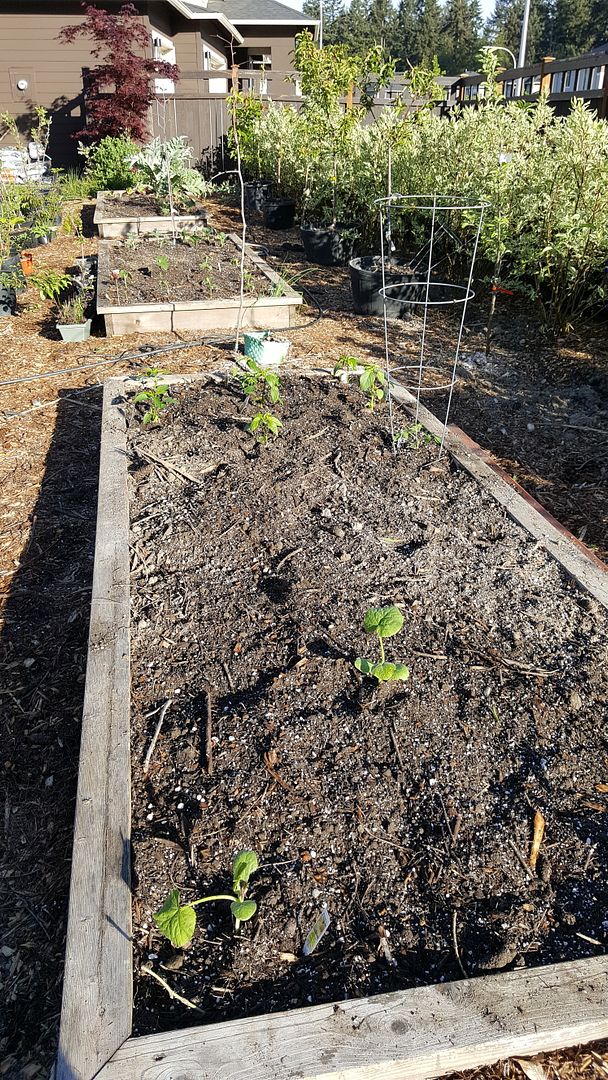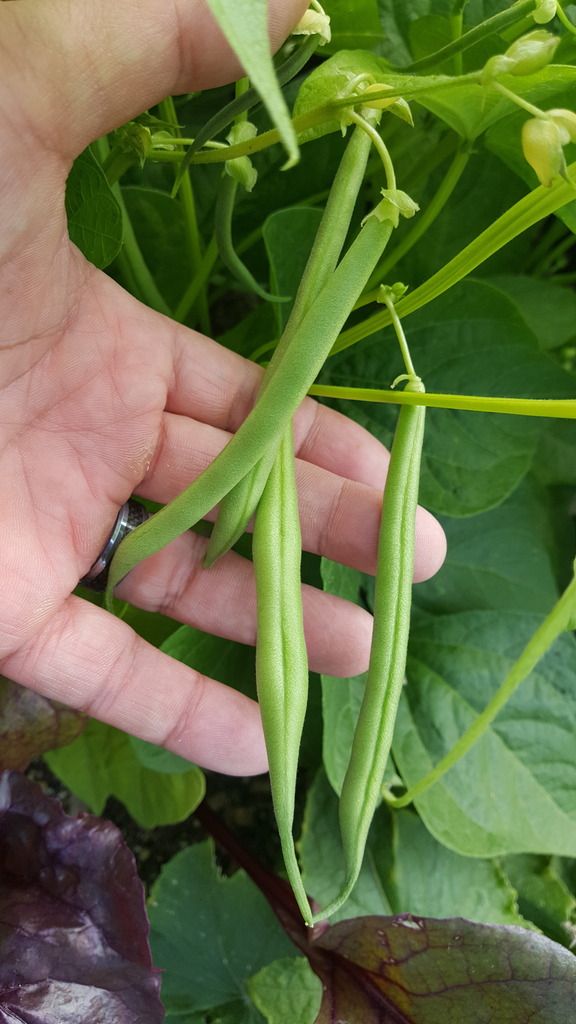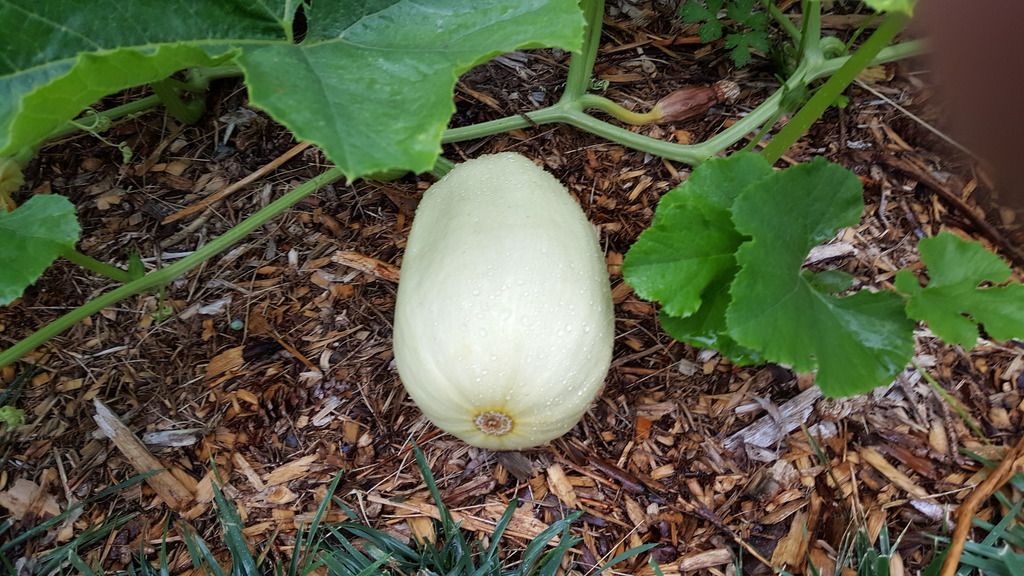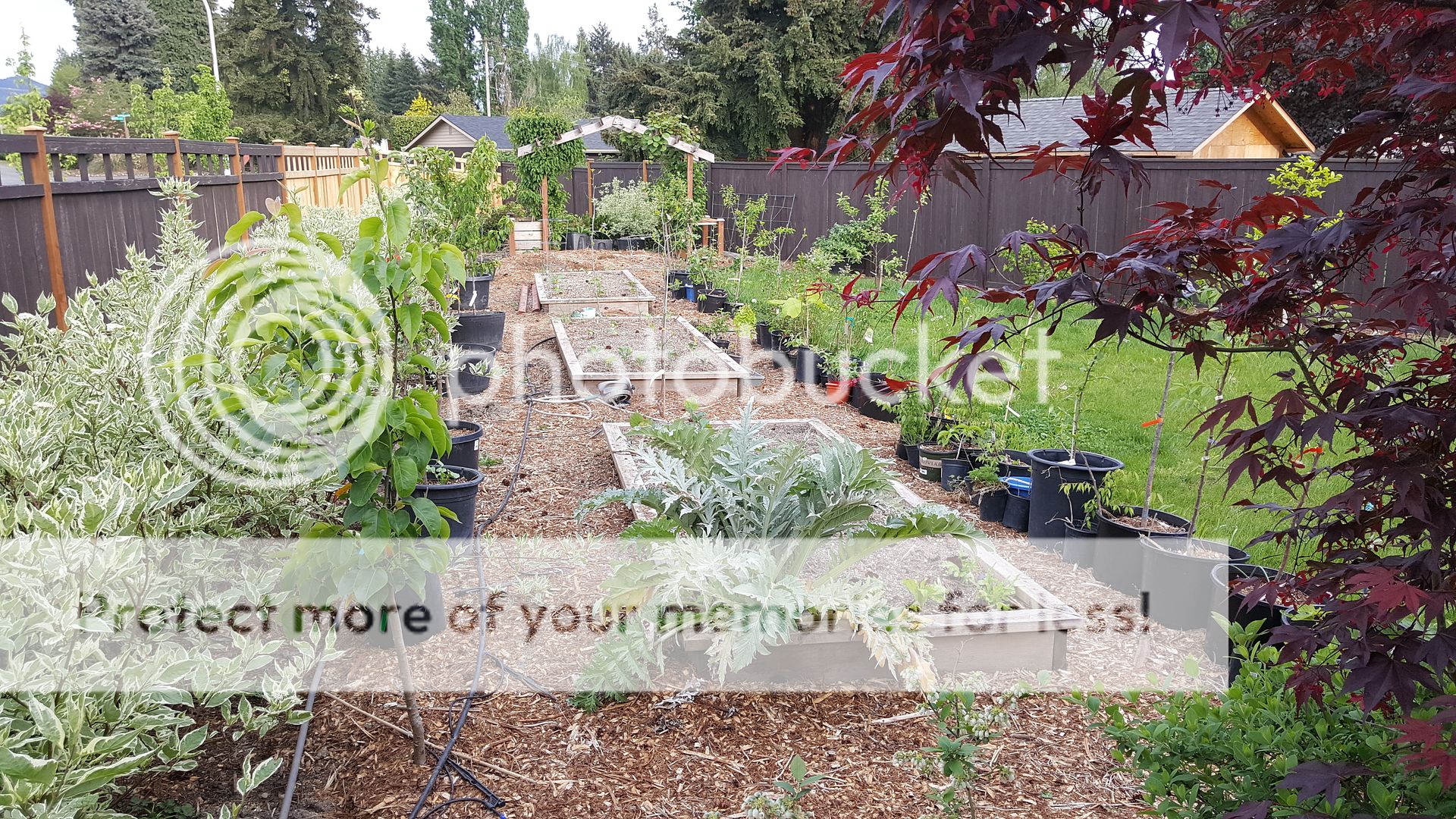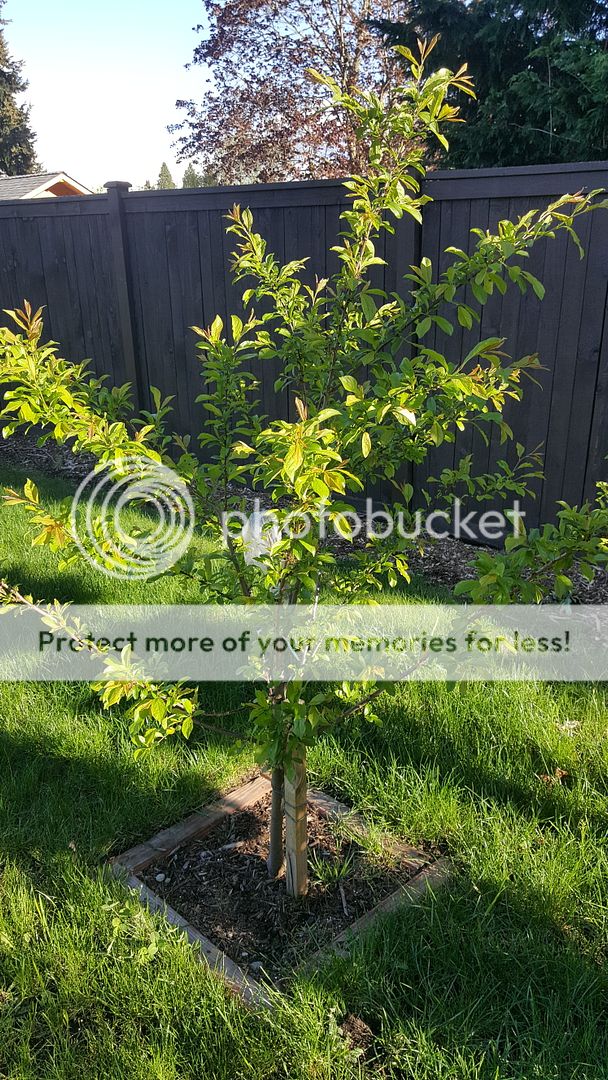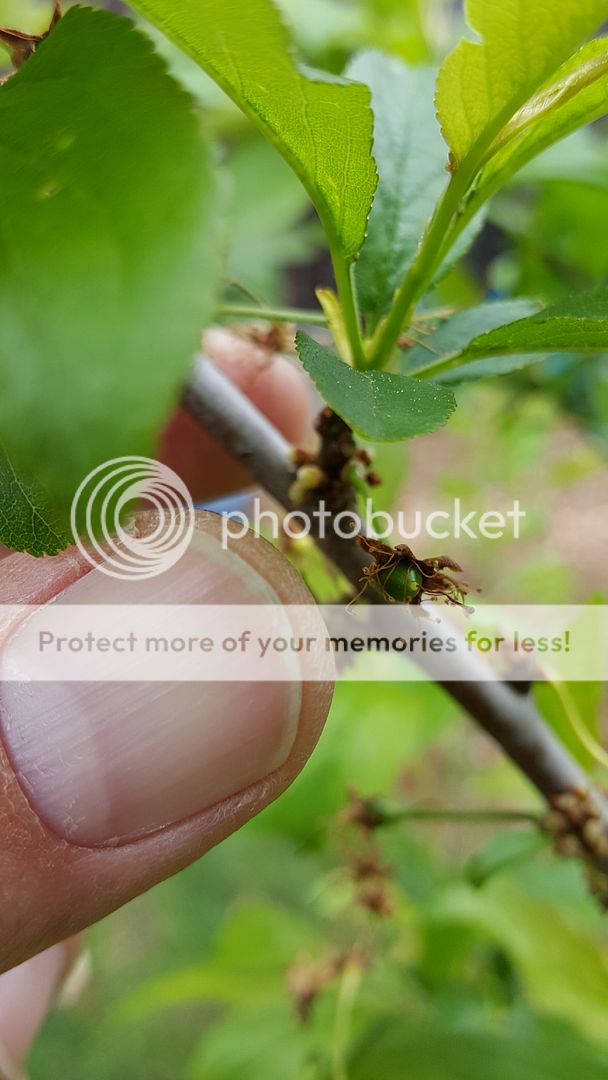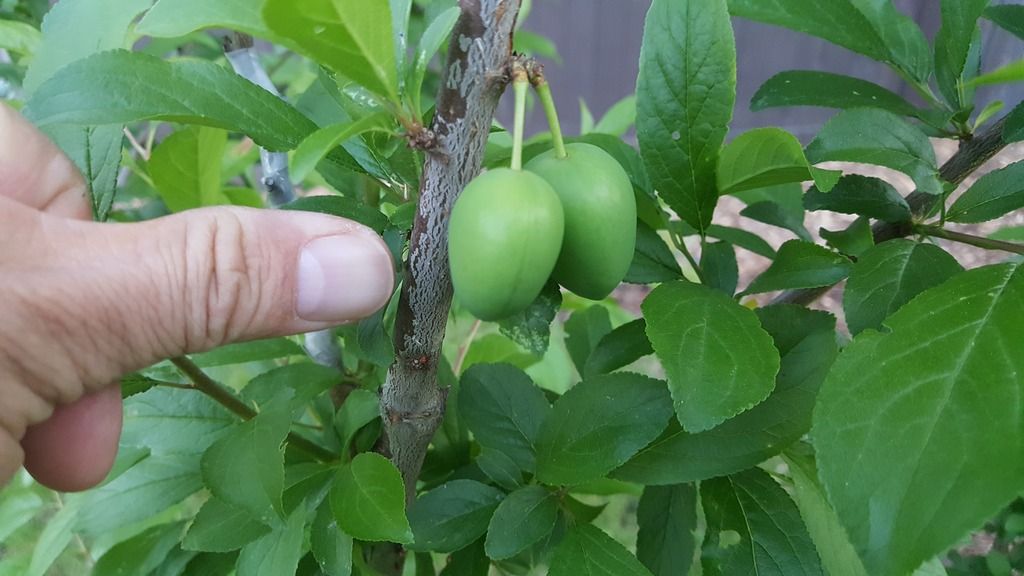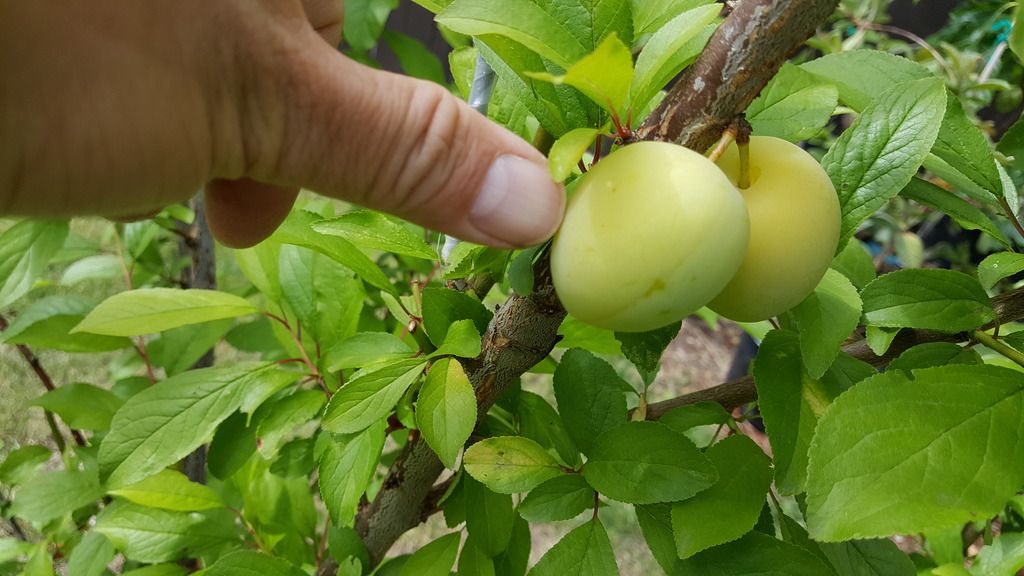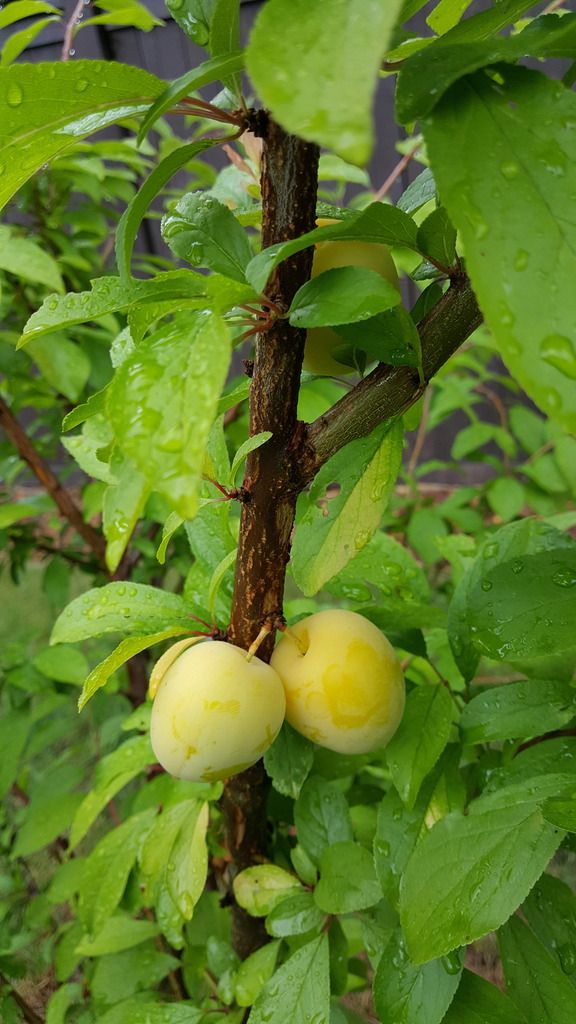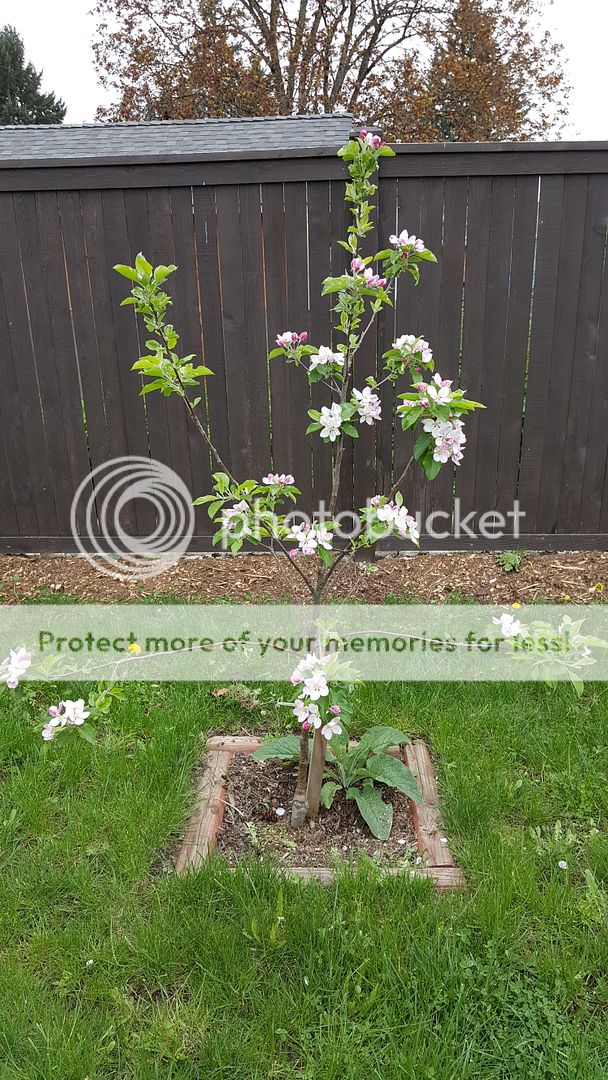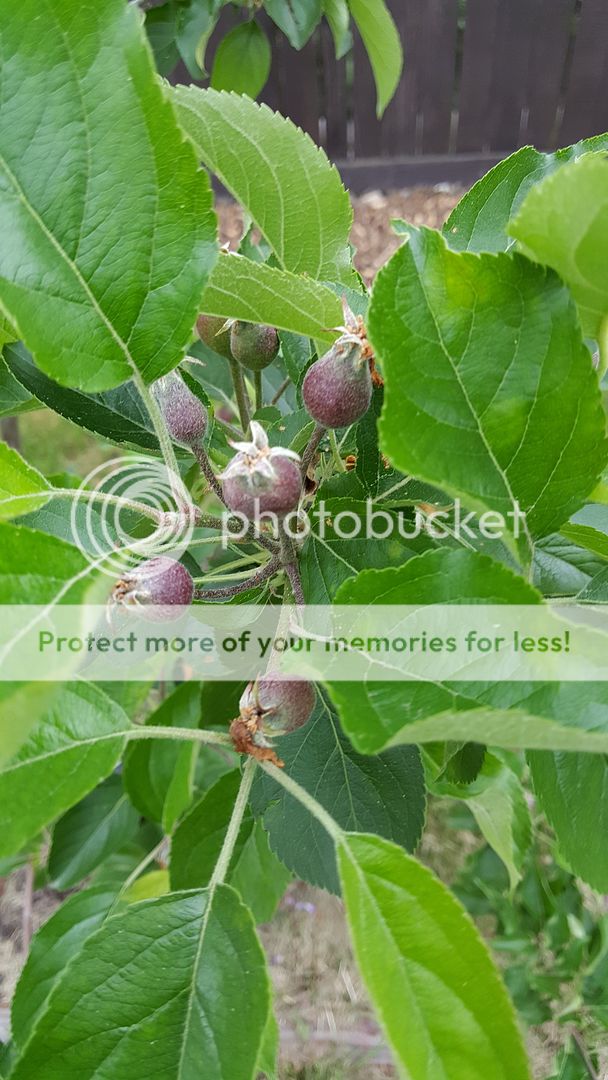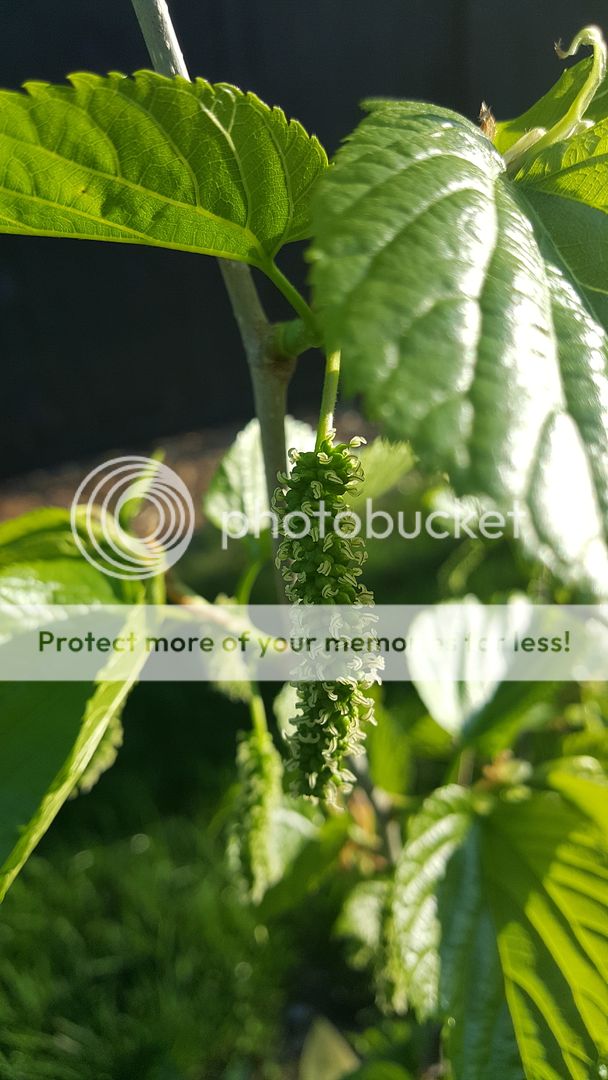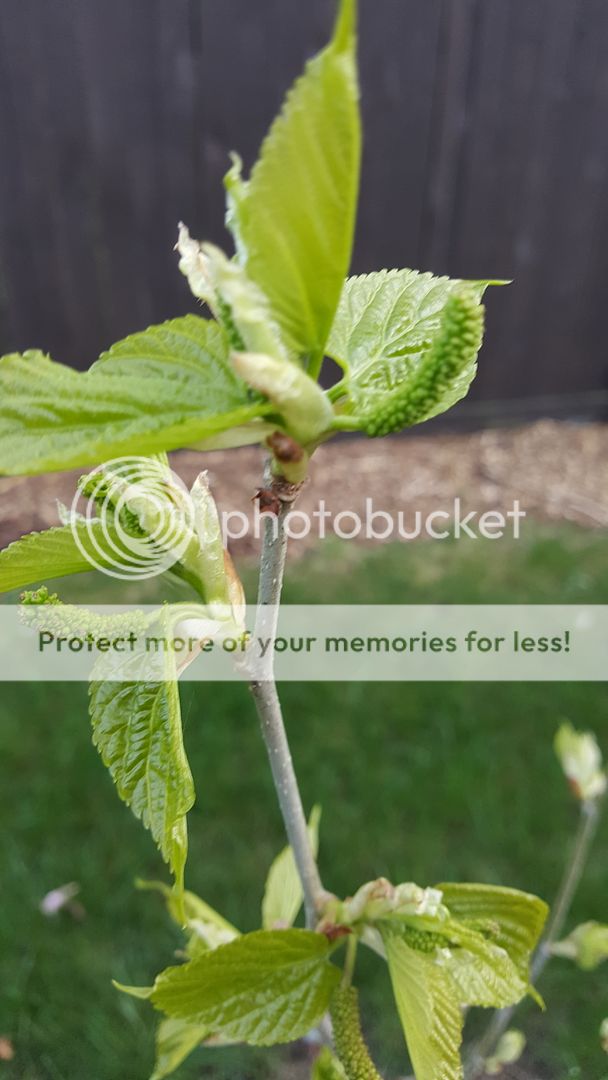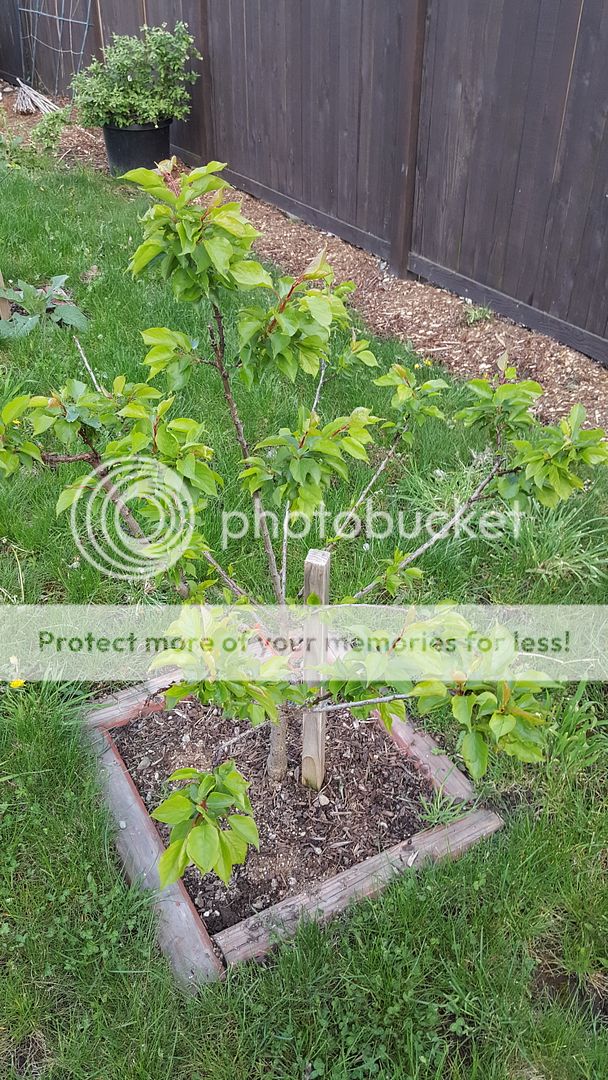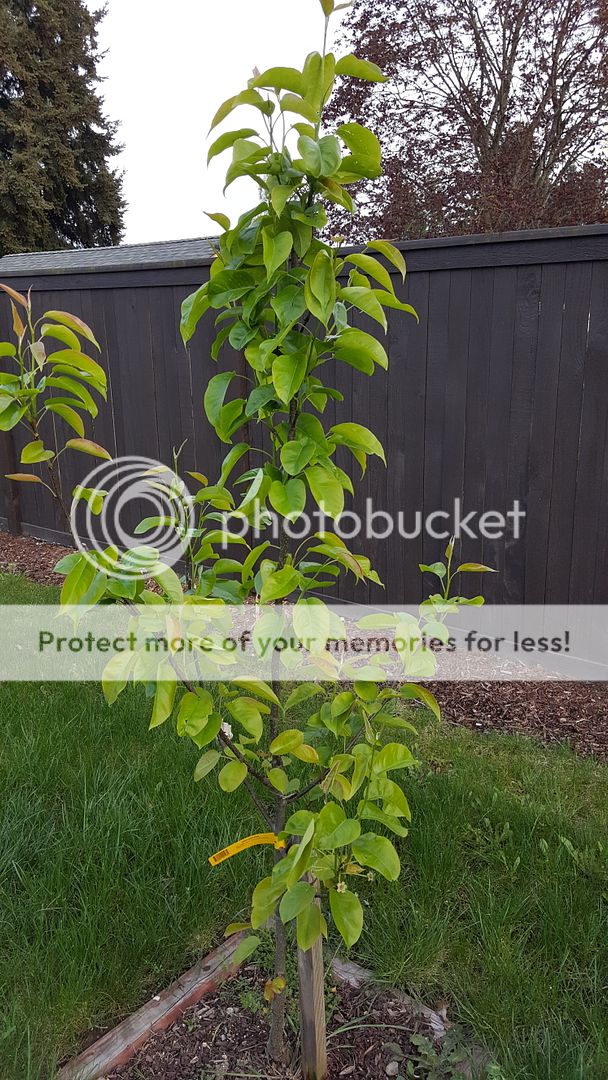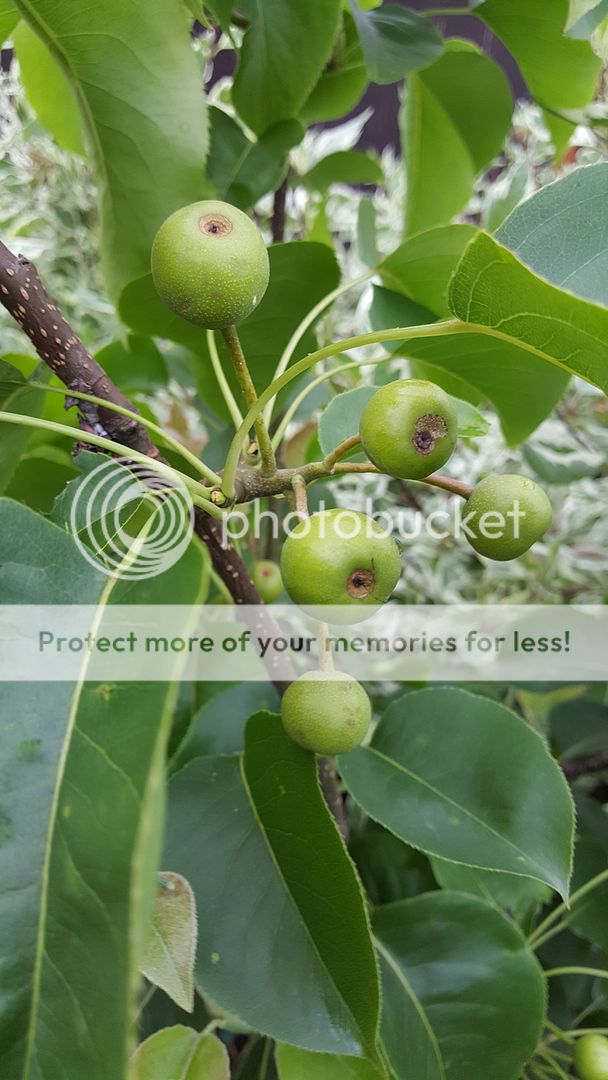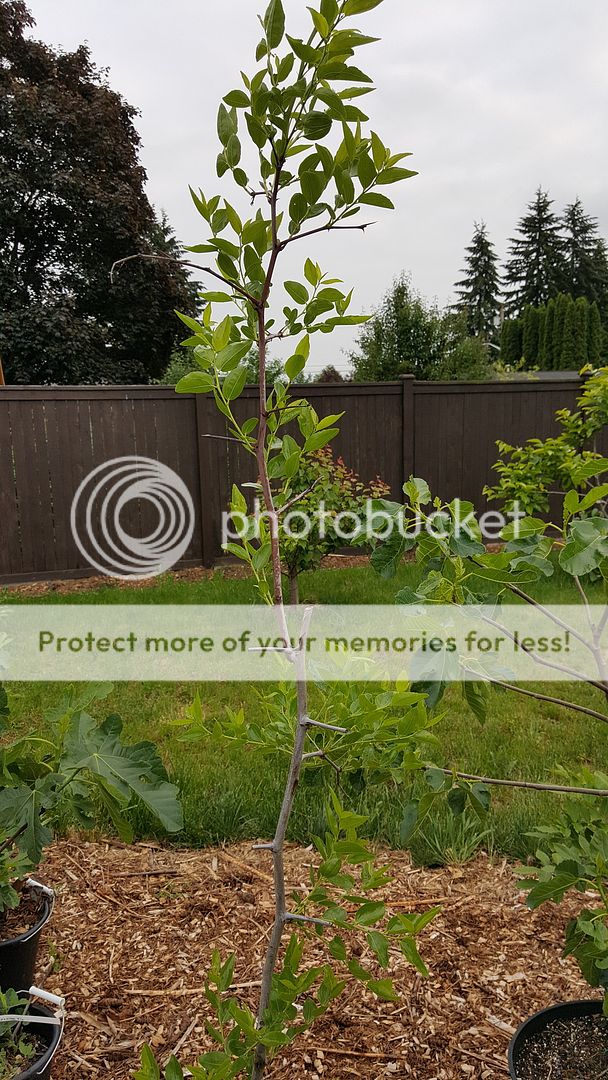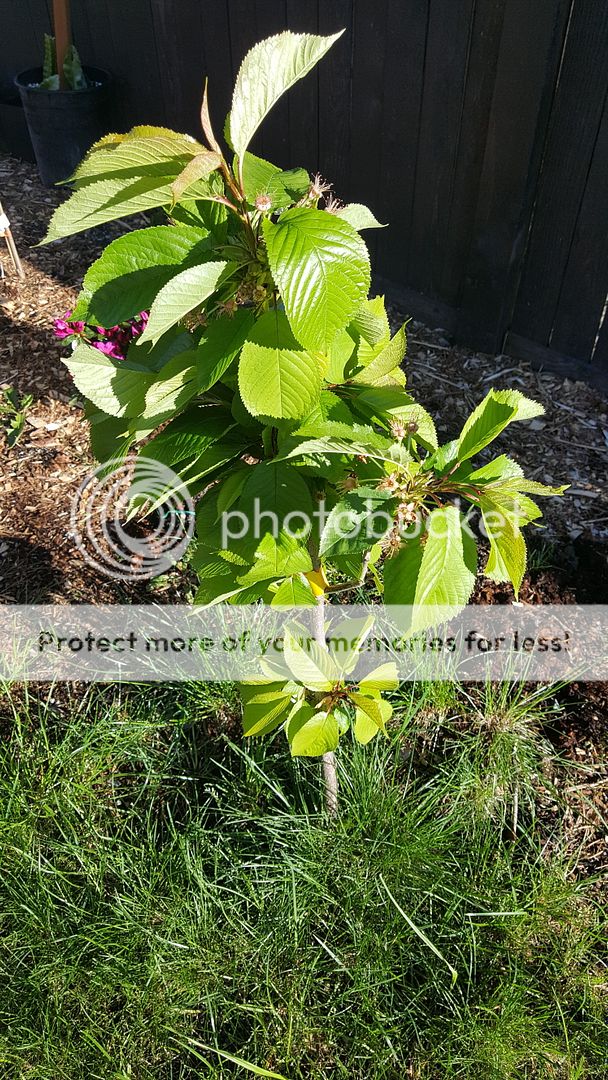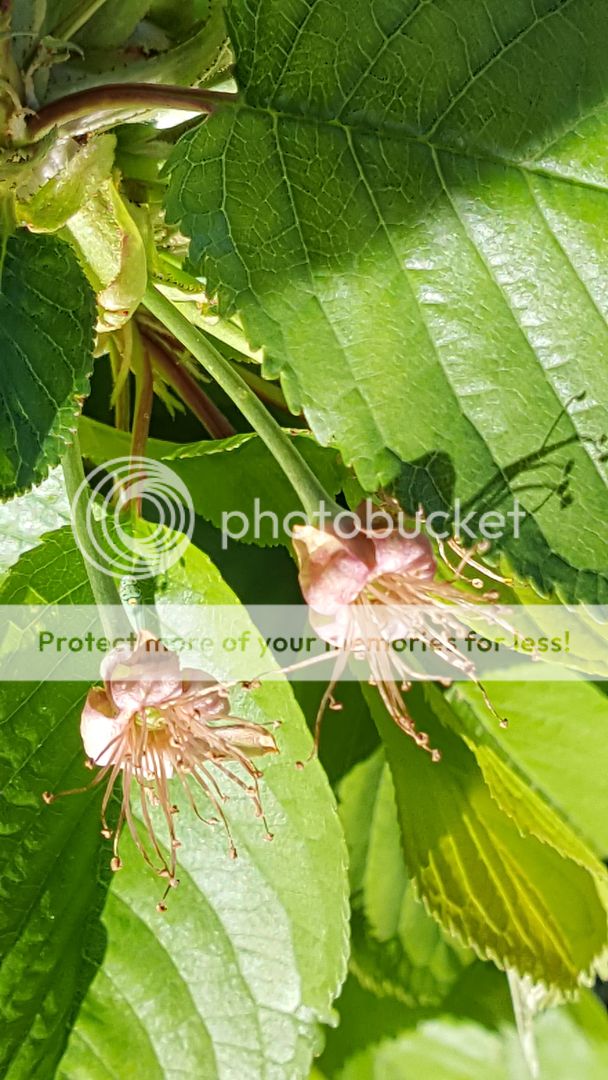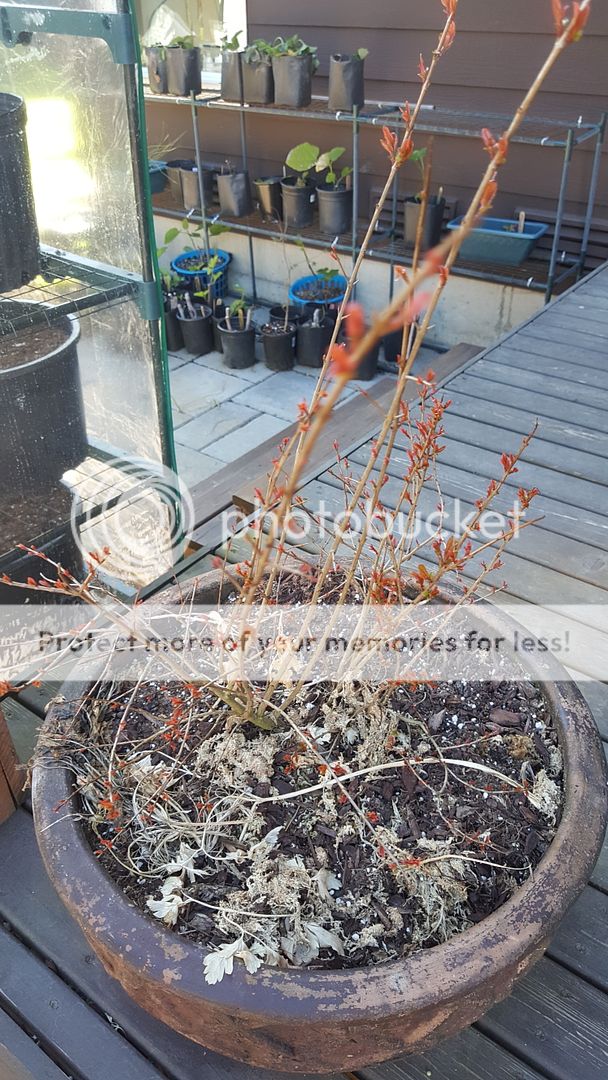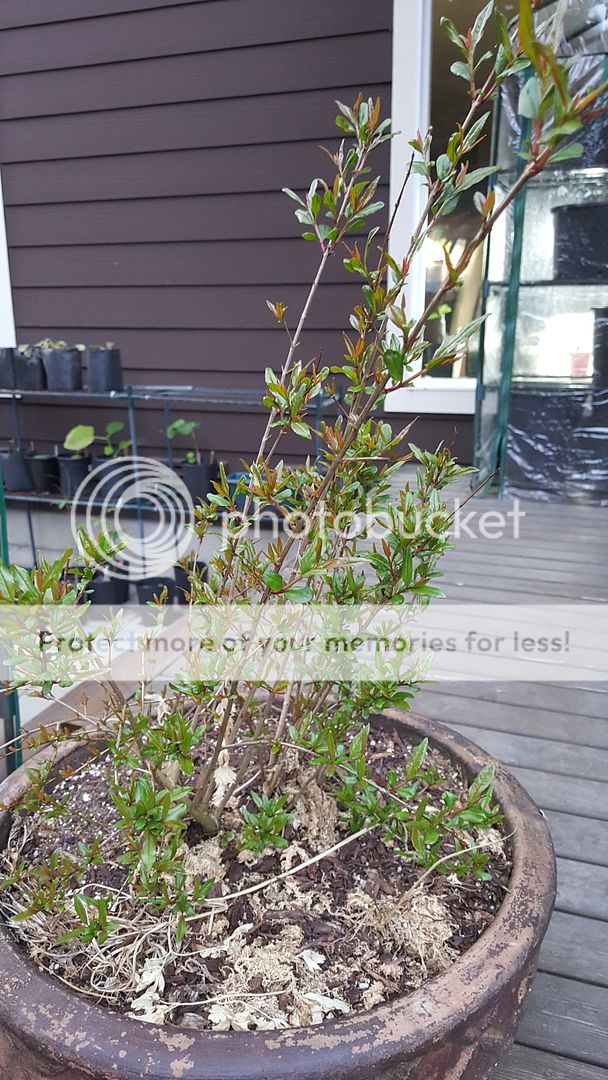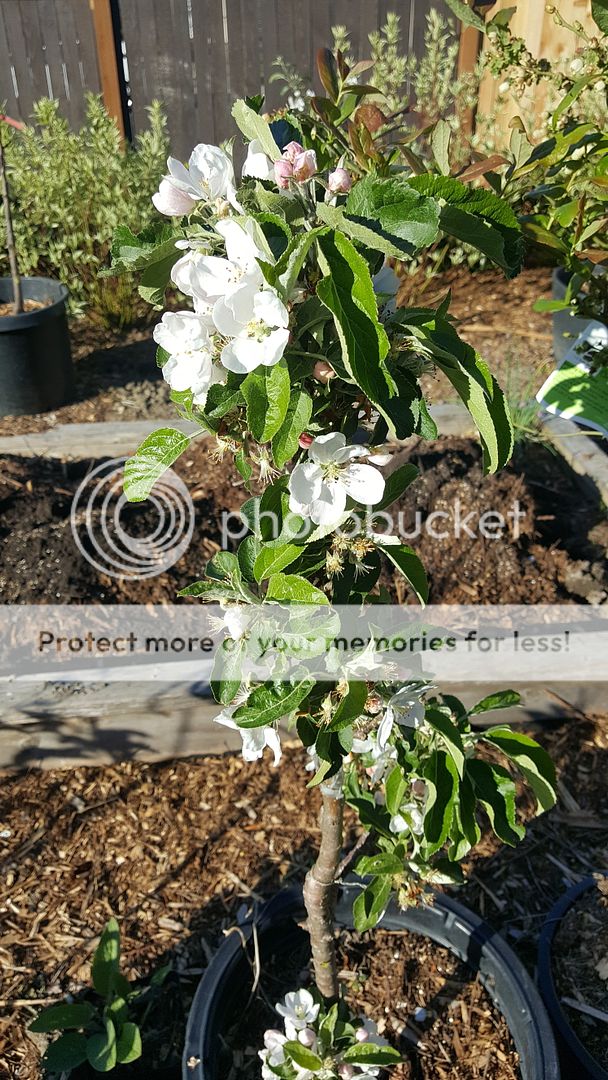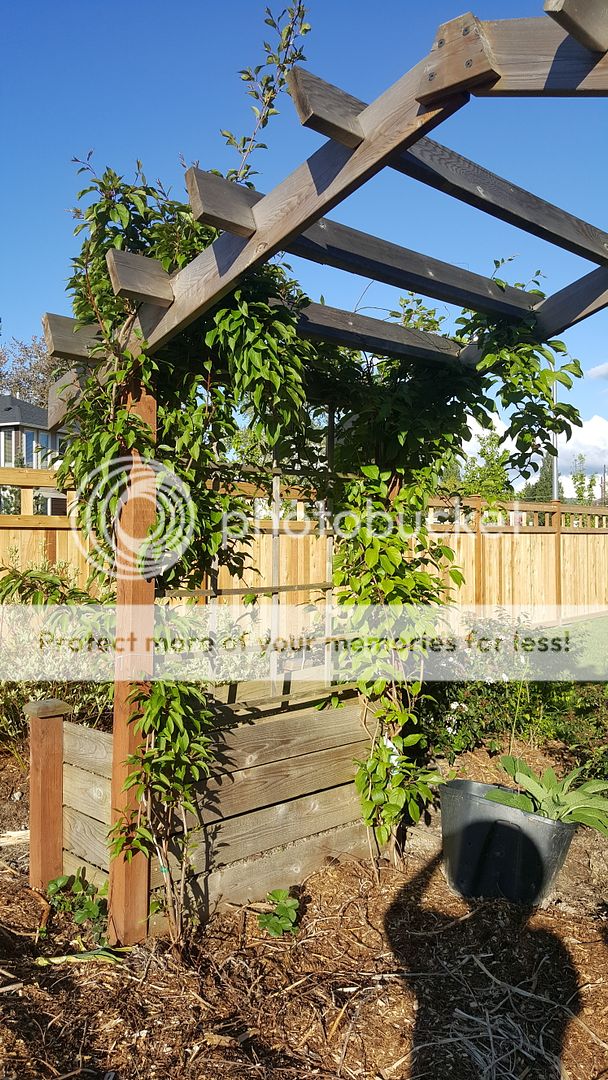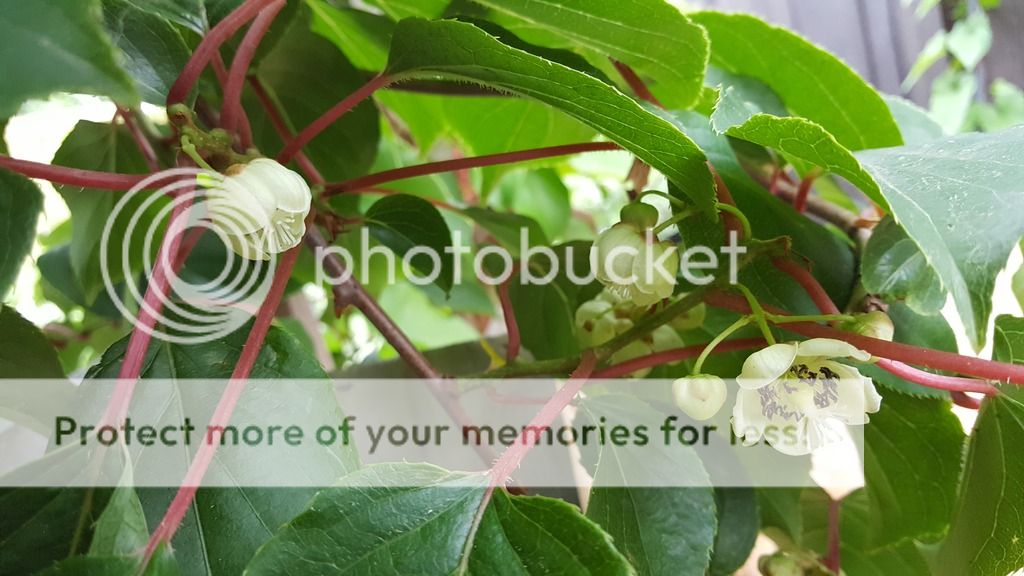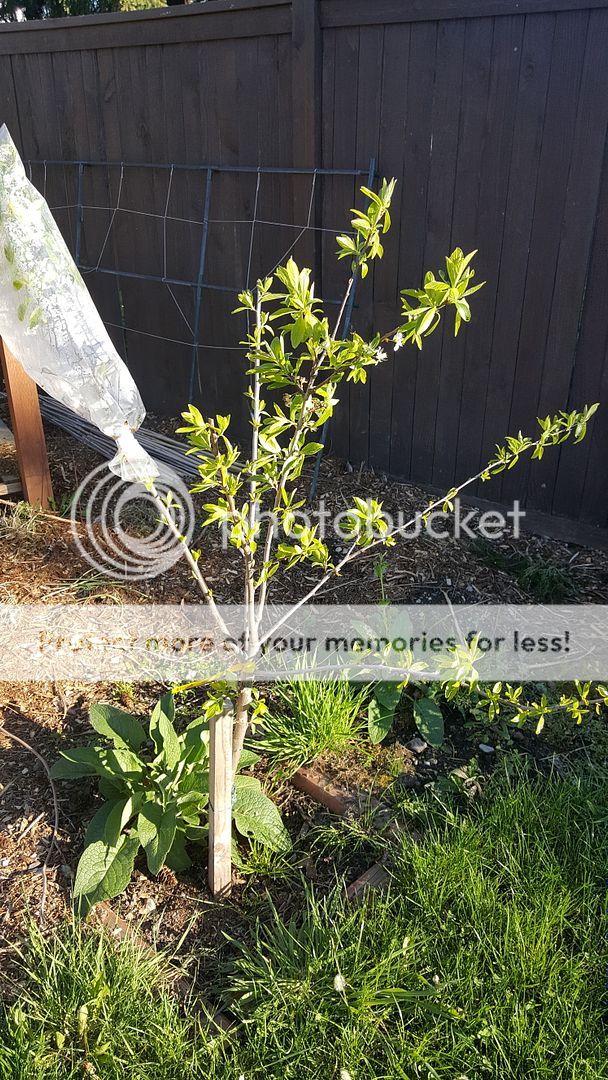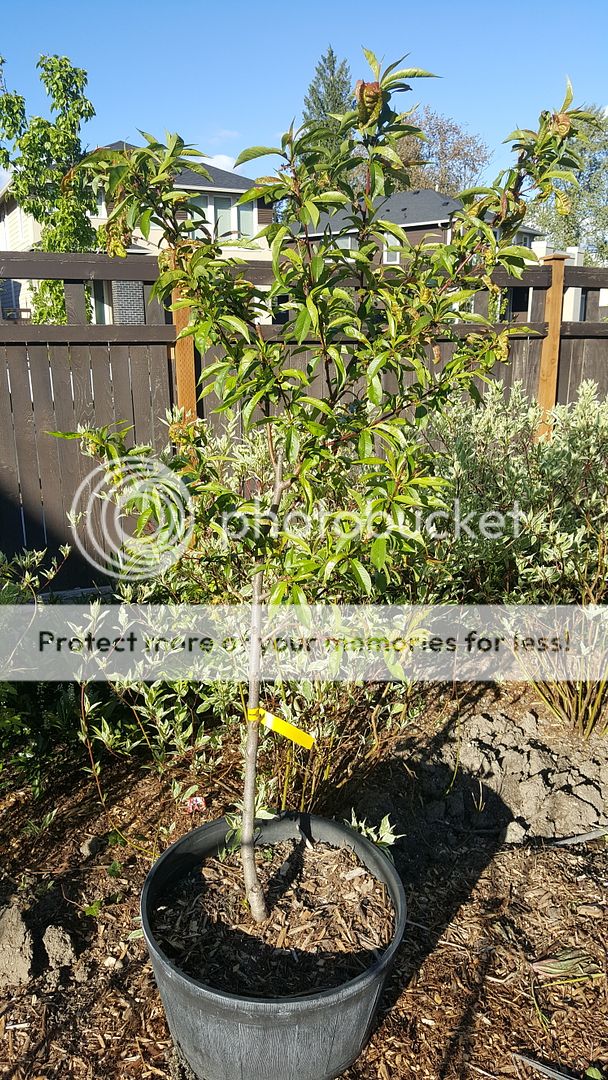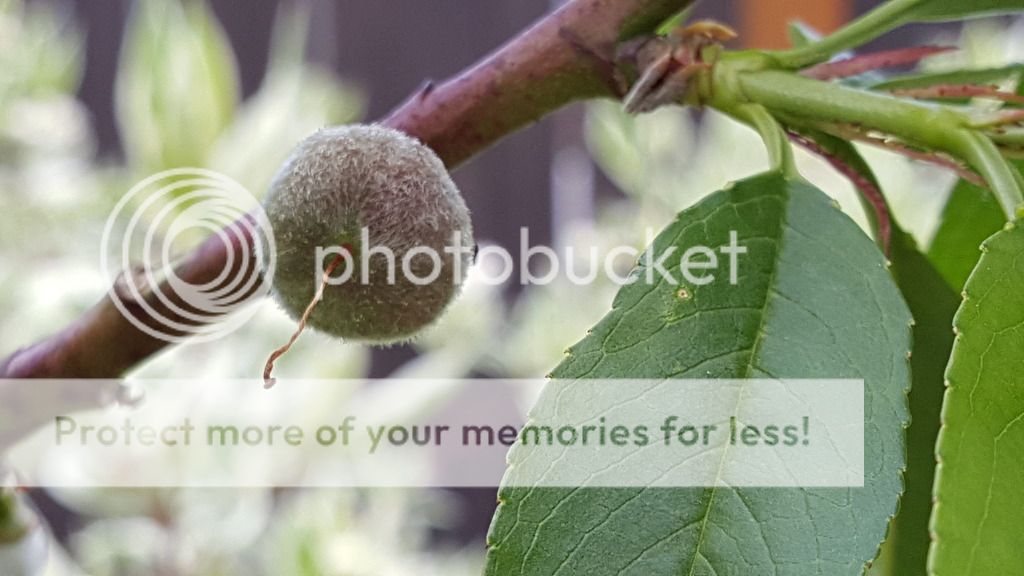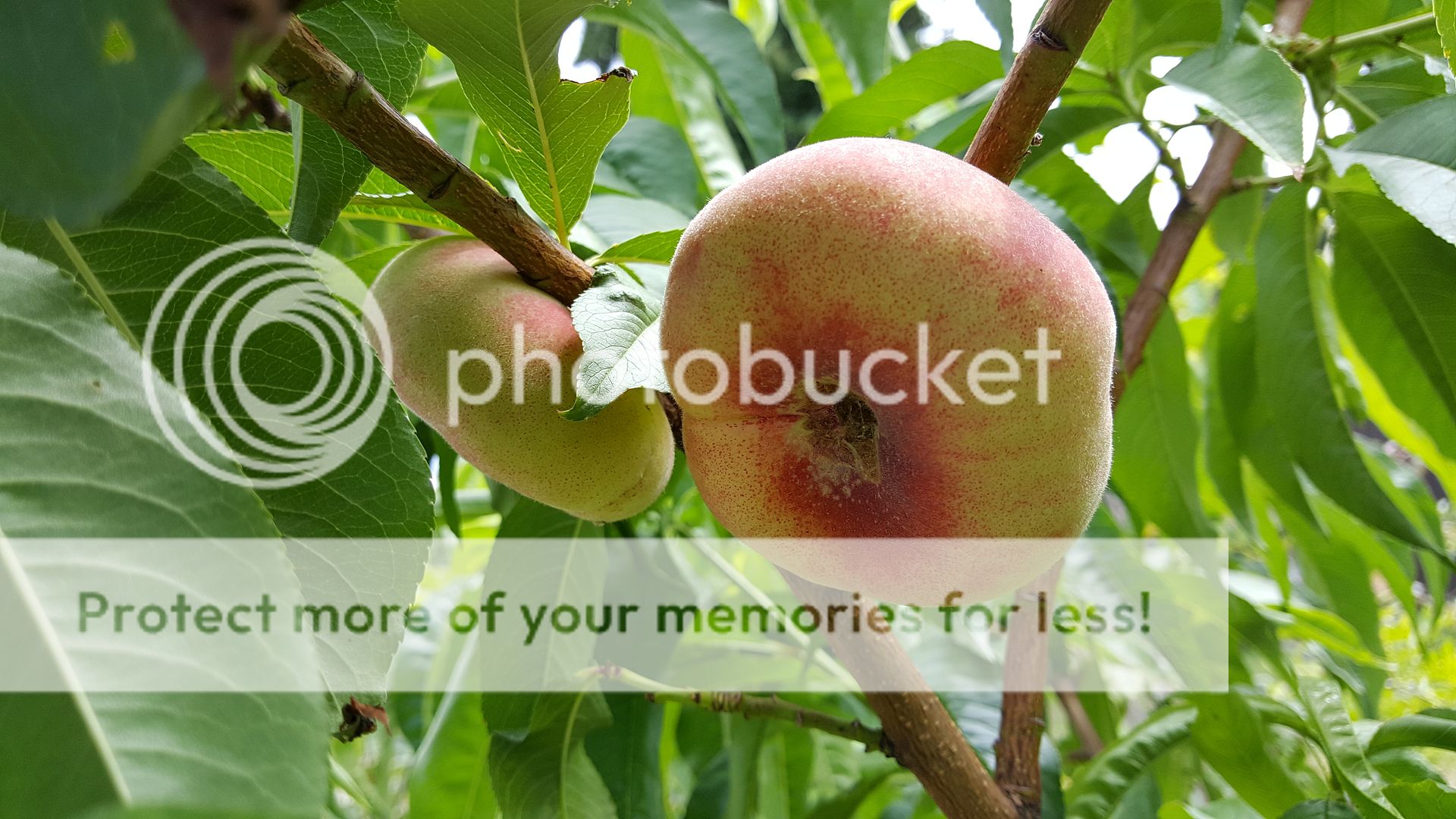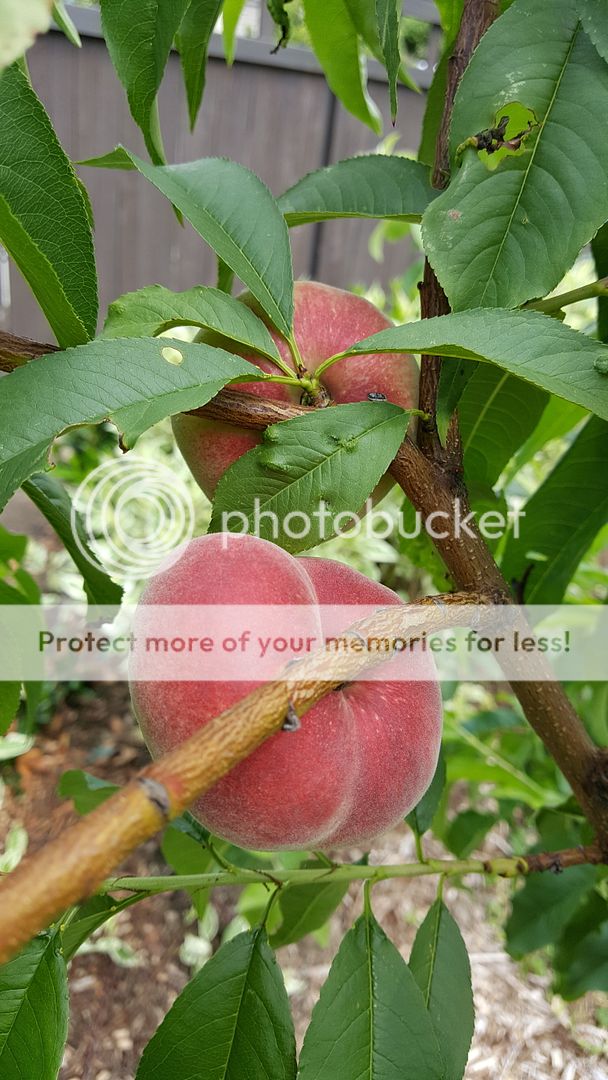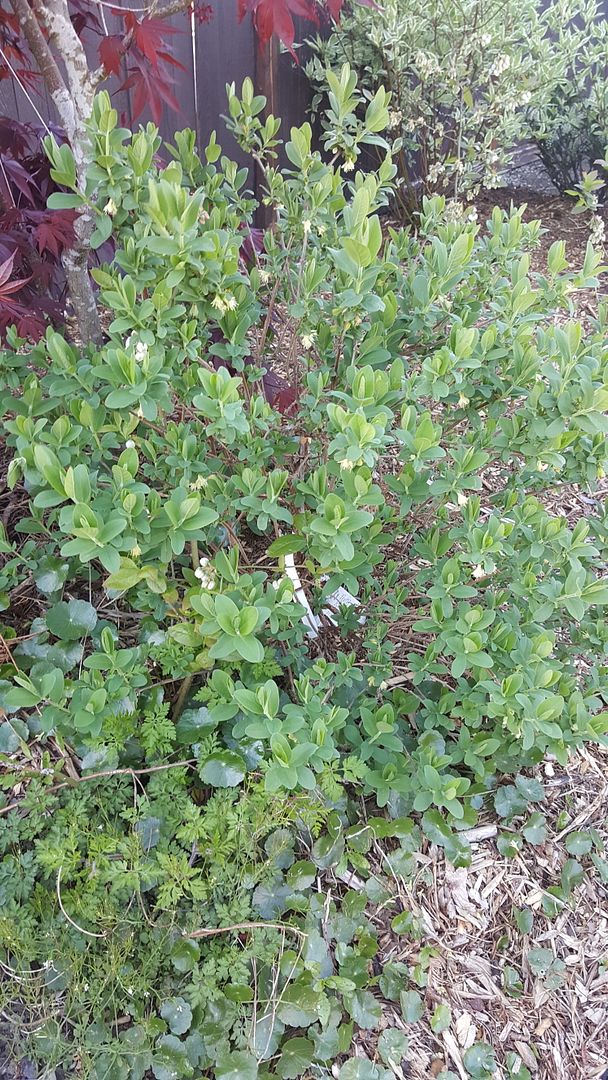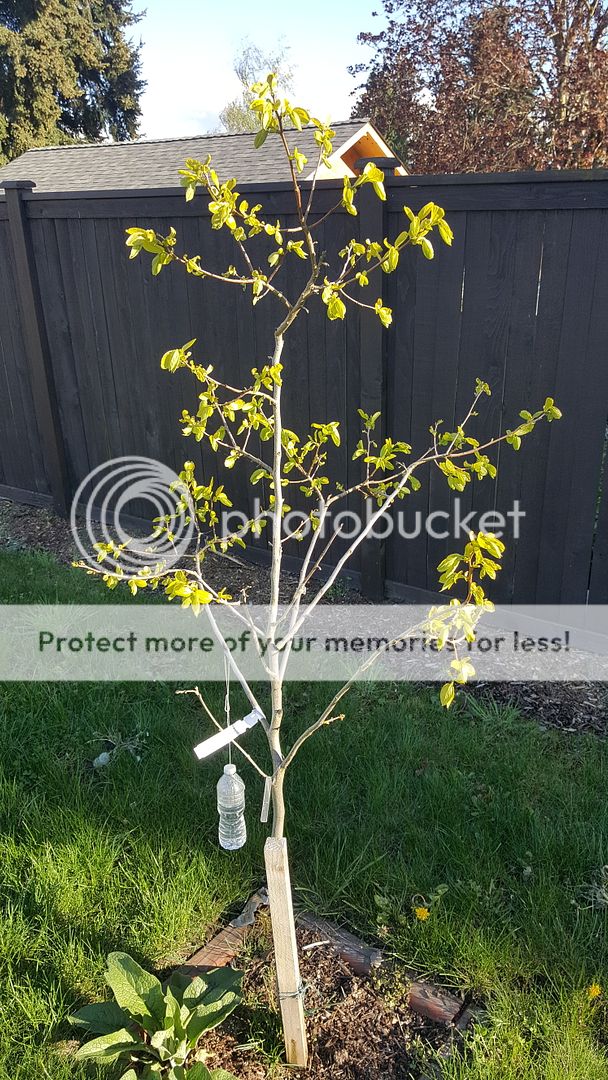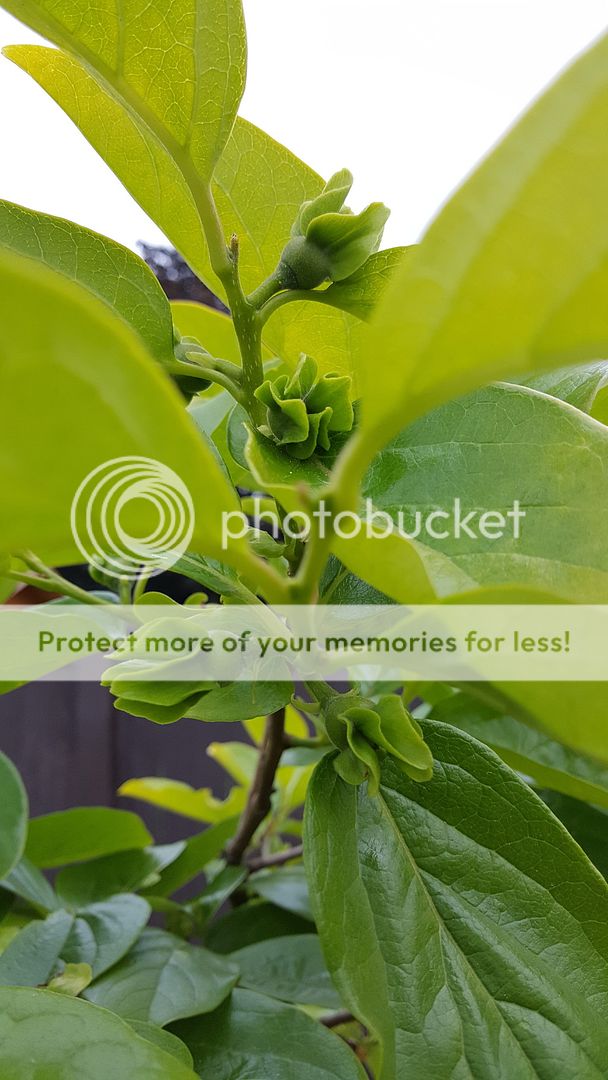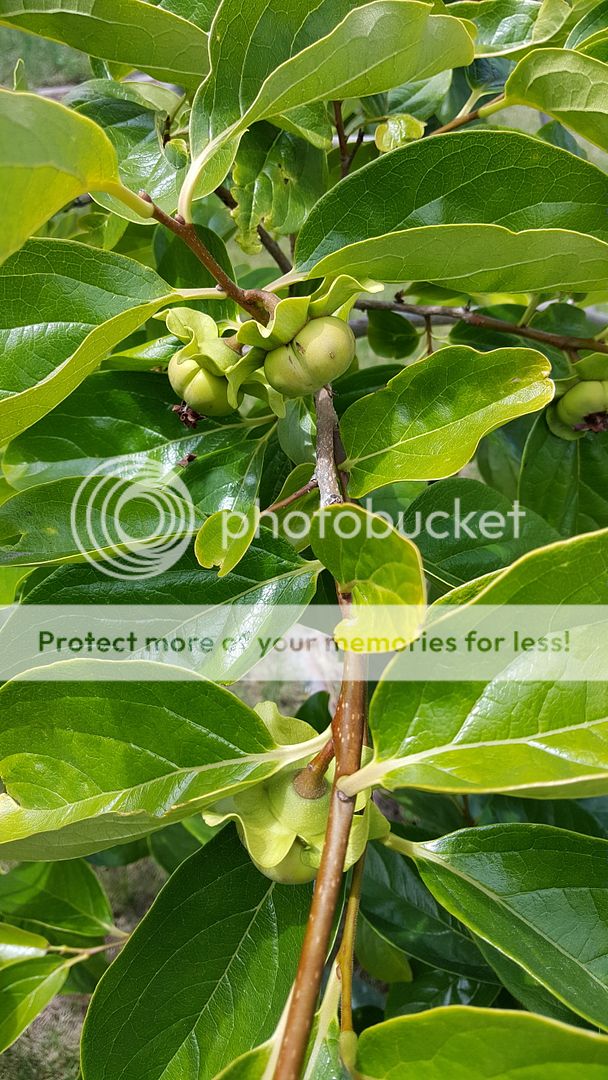4/29/16
I got this Fig tree from Figrific last year. It's showing some promise and pushing out some figs this year!! I'm very excited.
January 2016. Here's what it looks like just a couple months ago.
Finally!! I will get to taste a Black Madeira fig this year.
Friday, April 29, 2016
Wednesday, April 27, 2016
New Arrivals: Figs Palermo, Sicilian Red, White Genoa, Sucrette, Paradiso,Gene Gr, Red Eye Unk, Sultane
Must...
Stop...
Buying...
Figs....
But I can't resist...
I think I may have a small problem with getting figs in the mail. I wonder if anyone else deals with this. Time to Join Fig Addiction
Stop...
Buying...
Figs....
But I can't resist...
I think I may have a small problem with getting figs in the mail. I wonder if anyone else deals with this. Time to Join Fig Addiction
Palermo
Sicilian Red
White Genoa
Sucrette
Paradiso green
Sultane
Bronze Paradiso
Red Eye Unk. Cuttings
Fig Update + Hydroponic Fig + Ponte Tresa Update
Update on figs, cuttings, grafts, my hydroponic fig experiment, and Ponte Tresa fig
Thursday, April 21, 2016
The quest to grow Red Bayberry Seeds Myrica Rubra - Chinese Yangmei
The Myrica Rubra aka the Bayberry Tree is an interesting looking fruit from China.
The Chinese have been growing this attractive subtropical tree for 2,000 yrs. The fruit is about 1 inch in diameter, with a round, knobby surface that varies form red to purple. The biggest cultivar, DongKui, may get much bigger than that, up to 52 grams in weight. The pulp is similar in color with a sweet and tart flavor. Each fruit has a single seed is about 10% of the fruit much like a cherry. The Chinese have been using the seeds, leaves and roots for medicinal purposes for centuries. The bark has also been used as a yellow dye. The fruit can also be canned, dried, juiced and made into wine. Also known as Yumberry. This fruit has seen a dramatic increase in popularity over the last decade especially in Australia.
http://www.foodnavigator-asia.com/Business/Big-plans-for-Chinese-berry-in-Australia
From my research this plant is somewhat difficult to grow and ship. Which makes me want it even more. The harder or more rare a fruit is the more I want it.
There's mixed reviews on whether they need cold stratification or if they will germinate with just bottom heat. There have been a small handful of growers in California that have successfullly germinated and grown the plant.
It requires a somewhat lower PH Soil and is best planted in September so it can be naturally cold stratified and will hopefully sprout in the coming spring.
The fruit reminds me of our strawberry tree arbutus unedo but it's actually in it's own category of fruits. Arbutus can be a bit gritty and are no better than the fruiting dogwood Kousa.
Myrica rubra appears to be a superb tasting fruit you can tell by how much love and care they get from the folks involved their cultivation in China.
I've managed to get some seeds and will split the seeds in half. One half I will try to germinate right away and will stay in my warm house, while the other I will stick into some most coco coir and will live in my fridge for a couple of months to cold stratify.
Stay tuned.
Update: 8/8/16 We have a single sprout from about 50 seeds! Almost 3 months to germinate. Hopefully a few others will follow suite and germinate as well. It's time to take the ones from the fridge out to see if they would grow as well.
August 10
The Chinese have been growing this attractive subtropical tree for 2,000 yrs. The fruit is about 1 inch in diameter, with a round, knobby surface that varies form red to purple. The biggest cultivar, DongKui, may get much bigger than that, up to 52 grams in weight. The pulp is similar in color with a sweet and tart flavor. Each fruit has a single seed is about 10% of the fruit much like a cherry. The Chinese have been using the seeds, leaves and roots for medicinal purposes for centuries. The bark has also been used as a yellow dye. The fruit can also be canned, dried, juiced and made into wine. Also known as Yumberry. This fruit has seen a dramatic increase in popularity over the last decade especially in Australia.
http://www.foodnavigator-asia.com/Business/Big-plans-for-Chinese-berry-in-Australia
From my research this plant is somewhat difficult to grow and ship. Which makes me want it even more. The harder or more rare a fruit is the more I want it.
There's mixed reviews on whether they need cold stratification or if they will germinate with just bottom heat. There have been a small handful of growers in California that have successfullly germinated and grown the plant.
It requires a somewhat lower PH Soil and is best planted in September so it can be naturally cold stratified and will hopefully sprout in the coming spring.
The fruit reminds me of our strawberry tree arbutus unedo but it's actually in it's own category of fruits. Arbutus can be a bit gritty and are no better than the fruiting dogwood Kousa.
Myrica rubra appears to be a superb tasting fruit you can tell by how much love and care they get from the folks involved their cultivation in China.
I've managed to get some seeds and will split the seeds in half. One half I will try to germinate right away and will stay in my warm house, while the other I will stick into some most coco coir and will live in my fridge for a couple of months to cold stratify.
Stay tuned.
Update: 8/8/16 We have a single sprout from about 50 seeds! Almost 3 months to germinate. Hopefully a few others will follow suite and germinate as well. It's time to take the ones from the fridge out to see if they would grow as well.
August 10
Benefits of mycorrhizae and how to grow it and apply it to your plants
Mycorrhizae:
What Are Mycorrhizae?
“Mycor” – “rhiza” literally means “fungus” – “root” and describes the mutually beneficial relationship between the plant and root fungus. These specialized fungi colonize plant roots and extend far into the soil. Mycorrhizal fungal filaments in the soil are truly extensions of root systems and are more effective in nutrient and water absorption than the roots themselves. More than 90 percent of plant species in natural areas form a symbiotic relationship with the beneficial mycorrhizal fungi.
Are They Important?
Mycorrhizal fungi increase the surface absorbing area of roots 100 to a 1,000 times, thereby greatly improving the ability of the plant to access soil resources. Several miles of fungal filaments can be present in less than a thimbleful of soil. Mycorrhizal fungi increase nutrient uptake not only by increasing the surface absorbing area of the roots, but also release powerful enzymes into the soil that dissolve hard-to-capture nutrients, such as organic nitrogen, phosphorus, iron and other “tightly bound” soil nutrients. This extraction process is particularly important in plant nutrition and explains why non-mycorrhizal plants require high levels of fertilization to maintain their health. Mycorrhizal fungi form an intricate web that captures and assimilates nutrients, conserving the nutrient capital in soils.
Do You Need Them?
Undisturbed soils are full of beneficial soil organisms including mycorrhizal fungi. Research indicates, however, many common practices can degrade the mycorrhizae-forming potential of soil. Tillage, removal of topsoil, erosion, site preparation, compaction, fumigation, invasion of weeds, and leaving soils fallow are some of the activities that can reduce or eliminate these beneficial soil fungi. Scientific studies indicate endo mycorrhizal fungal populations are slow to recolonize, unless there is close access to natural areas that can act as a source of mycorrhizal spores to repopulate the affected area. Reintroducing mycorrhizal fungi in areas where they have been lost can dramatically improve plant performance with less water and fertilizer and at a reduced cost.
What does it look like?
Mycorrhizae can be very expensive to constantly buy.
HP Promix with mycrorrhizae is $59 for 3.8Cu Ft
Dry Mycorrhizae can be $29 for a 2lb bag
So why not grow your own?
Mycorrhizae is found naturally in areas with lots of wood mulch, compost and leaf litter. That's why compost tea can be so beneficial to your plants because you're adding beneficial bacteria and Mycorrhizae to the root of the plant.
I have noticed that even in my "lasagna method" trays of rooting figs, Mycorrhizae fungus can be found at the bottom of the trays. This has given me the idea that you can grow your own Mycorrhizae, just as long as you give it the right environment and seed the container with some of spores.
My plan is to keep wood chips with Mycorrhizae spores in a plastic bin with high humidity. And in each up pot I will add a handful or two of the seeded wood chips.
Here's what it looks like. A spider web like fungal spore. This came out of one of my pots after up potting. White gold!
What Are Mycorrhizae?
“Mycor” – “rhiza” literally means “fungus” – “root” and describes the mutually beneficial relationship between the plant and root fungus. These specialized fungi colonize plant roots and extend far into the soil. Mycorrhizal fungal filaments in the soil are truly extensions of root systems and are more effective in nutrient and water absorption than the roots themselves. More than 90 percent of plant species in natural areas form a symbiotic relationship with the beneficial mycorrhizal fungi.
Are They Important?
Mycorrhizal fungi increase the surface absorbing area of roots 100 to a 1,000 times, thereby greatly improving the ability of the plant to access soil resources. Several miles of fungal filaments can be present in less than a thimbleful of soil. Mycorrhizal fungi increase nutrient uptake not only by increasing the surface absorbing area of the roots, but also release powerful enzymes into the soil that dissolve hard-to-capture nutrients, such as organic nitrogen, phosphorus, iron and other “tightly bound” soil nutrients. This extraction process is particularly important in plant nutrition and explains why non-mycorrhizal plants require high levels of fertilization to maintain their health. Mycorrhizal fungi form an intricate web that captures and assimilates nutrients, conserving the nutrient capital in soils.
Do You Need Them?
Undisturbed soils are full of beneficial soil organisms including mycorrhizal fungi. Research indicates, however, many common practices can degrade the mycorrhizae-forming potential of soil. Tillage, removal of topsoil, erosion, site preparation, compaction, fumigation, invasion of weeds, and leaving soils fallow are some of the activities that can reduce or eliminate these beneficial soil fungi. Scientific studies indicate endo mycorrhizal fungal populations are slow to recolonize, unless there is close access to natural areas that can act as a source of mycorrhizal spores to repopulate the affected area. Reintroducing mycorrhizal fungi in areas where they have been lost can dramatically improve plant performance with less water and fertilizer and at a reduced cost.
What does it look like?
Basil with mycorrhizae on the left and the one without on the right.
Mycorrhizae can be very expensive to constantly buy.
HP Promix with mycrorrhizae is $59 for 3.8Cu Ft
Dry Mycorrhizae can be $29 for a 2lb bag
So why not grow your own?
Mycorrhizae is found naturally in areas with lots of wood mulch, compost and leaf litter. That's why compost tea can be so beneficial to your plants because you're adding beneficial bacteria and Mycorrhizae to the root of the plant.
I have noticed that even in my "lasagna method" trays of rooting figs, Mycorrhizae fungus can be found at the bottom of the trays. This has given me the idea that you can grow your own Mycorrhizae, just as long as you give it the right environment and seed the container with some of spores.
My plan is to keep wood chips with Mycorrhizae spores in a plastic bin with high humidity. And in each up pot I will add a handful or two of the seeded wood chips.
Here's what it looks like. A spider web like fungal spore. This came out of one of my pots after up potting. White gold!
Air Layering my Che Fruit 4/20/16
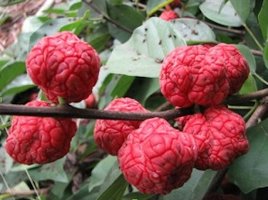 My 1st Che fruit plant that I purchased from Edible Landscape has been growing great but it's not branching the way I would like it to. It's kinda long and floppy with not very much branching. Edible landscape claims that their trees are self fertile but we shall see.
My 1st Che fruit plant that I purchased from Edible Landscape has been growing great but it's not branching the way I would like it to. It's kinda long and floppy with not very much branching. Edible landscape claims that their trees are self fertile but we shall see.Che Fruit
2015 (The che is on the far left)
This is an expensive and rare fruit tree and very hard to find at any local nurseries so I'd like to have as many clones of it as possible. So instead of pruning it to promote side branching I did an air layer and once it roots take a couple of more cuttings to root. They are related to Figs so maybe they will have the same easy rooting characteristics.
Here's what it looks like today. A long 6 ft whip with one branch at the bottom. Not too sexy in my opinion. I did not want to prune it last year because I wanted it to get established. This year is a different story.
Scraped the bark to give it place for roots to grow from
Slipped over a sandwich bag that has the bottom cut out of it and zipped tied the bottom
I used the same medium I use to root my figs with, Coco coir, HP promix and perlite. Pre moistened
Hopefully in 4-6 weeks the roots will begin to show.
Che Update: 5/9/16 Tiny little fruits are growing. I hear they drop their first season. So I'm not holding my breath
Unripened Che fruit
Wednesday, April 20, 2016
Growing Pawpaws in Seattle
So besides my fascination with figs, Paw Paws are 2nd on the list for fruits that I'm extremely fascinated with.
First of all they are the largest American fruit. However sadly, I haven't yet to taste the fruit. I've heard it been described as a custardy banana even though they resemble a mango.
My initial experience with this fruit came from buying some small bareroot pawpaw seedlings off of Ebay. 2 out of 3 took but then quickly died the next winter. Fail #1
I then bought 2 larger bare root plants and those never woke from their dormancy. Fail #2
So I bucked up and bought 2 live plants from Flower world in Monroe. I put them in ground last year and this year they are still alive so I'm extremely excited about that.
The larger of the 2 trees also set flowers to my surprise. It could be our unnaturally warm weather too that is causing this. 90s in Early April is record setting here.
Paw paws do not ship well so it probably explains why not many Americans know about them. They are also only pollinated by one type of moth, which explains why not everyone has success growing them. I did speak to someone who has experience with them here in WA and they used the trick of tying a piece of chicken or fish to the tree to attract flies.
And if you hate flies you can always hand pollinate.
The flowers turn from green to deep red as it blooms.
First of all they are the largest American fruit. However sadly, I haven't yet to taste the fruit. I've heard it been described as a custardy banana even though they resemble a mango.
My initial experience with this fruit came from buying some small bareroot pawpaw seedlings off of Ebay. 2 out of 3 took but then quickly died the next winter. Fail #1
I then bought 2 larger bare root plants and those never woke from their dormancy. Fail #2
So I bucked up and bought 2 live plants from Flower world in Monroe. I put them in ground last year and this year they are still alive so I'm extremely excited about that.
The larger of the 2 trees also set flowers to my surprise. It could be our unnaturally warm weather too that is causing this. 90s in Early April is record setting here.
Paw paws do not ship well so it probably explains why not many Americans know about them. They are also only pollinated by one type of moth, which explains why not everyone has success growing them. I did speak to someone who has experience with them here in WA and they used the trick of tying a piece of chicken or fish to the tree to attract flies.
And if you hate flies you can always hand pollinate.
The flowers turn from green to deep red as it blooms.
New Arrivals: 4/20/16 Galicia Negra & Martinenca Rimada
Monday, April 18, 2016
Bananas & finally planted my raised beds
New Bananas: 4/16/16
It sounds amazing but some Cold Hardy Bananas will survive our winters here in Seattle. The Musa Basjoo supposedly can withstand -3F temperatures.
I love tropical plants, so I bought these 2 little guys which are probably about 6 inches tall upon arrival. Let's see how big I can grow them this year. (That's if I do not kill them)
Bananas Like:
Raised Beds:
Been so busy with the new fence and other things in my life that tilling and amending my 3 raised beds has been low on my priority list. I finally managed to get them tilled last week. The original soil came from Carpinitos Top Soil delivery. I'm not too happy with it. It compacts after one season and had very little organics in it.
This year I added broken down wood chips, perlite, steer gro, and compost to each bead and gave then a thorough tilling. The soil looks amazing now. It's soft fluffy and full of humus, the added woodchips is to encourage mycorrhizae to grow. I've read that you're not suppose to till your raised beds but in this case it needed it badly. Moving forward I'm treating it like my potted plants. I also added rock dust and 10-10-10 to really super charge the soil.
I even got the wifey involved this year I gave her one of the beds to plant whatever she wanted. She opted for the Kale, lettuce, zucchini, cabbage and beans. While this year I'm just going to focus on peppers and my giant pumpkin.
After planting them she really took over 2 beds, but I'm perfectly happy so as long as we're enjoying the garden together.
A happy wife is a happy life!
July 2016 Update:
The bare beds have been taken over by the squash
It sounds amazing but some Cold Hardy Bananas will survive our winters here in Seattle. The Musa Basjoo supposedly can withstand -3F temperatures.
I love tropical plants, so I bought these 2 little guys which are probably about 6 inches tall upon arrival. Let's see how big I can grow them this year. (That's if I do not kill them)
Bananas Like:
- Rich, dark, fertile soils.
- Lots of mulch and organic matter. LOTS. Just keep piling it on.
- Lots of nitrogen and potassium. (Chicken manure or Steer gro!)
Raised Beds:
Been so busy with the new fence and other things in my life that tilling and amending my 3 raised beds has been low on my priority list. I finally managed to get them tilled last week. The original soil came from Carpinitos Top Soil delivery. I'm not too happy with it. It compacts after one season and had very little organics in it.
This year I added broken down wood chips, perlite, steer gro, and compost to each bead and gave then a thorough tilling. The soil looks amazing now. It's soft fluffy and full of humus, the added woodchips is to encourage mycorrhizae to grow. I've read that you're not suppose to till your raised beds but in this case it needed it badly. Moving forward I'm treating it like my potted plants. I also added rock dust and 10-10-10 to really super charge the soil.
I even got the wifey involved this year I gave her one of the beds to plant whatever she wanted. She opted for the Kale, lettuce, zucchini, cabbage and beans. While this year I'm just going to focus on peppers and my giant pumpkin.
After planting them she really took over 2 beds, but I'm perfectly happy so as long as we're enjoying the garden together.
A happy wife is a happy life!
July 2016 Update:
The bare beds have been taken over by the squash
Friday, April 15, 2016
Let's take a tour of the garden and see what's alive today
It's April in Seattle, let's see what the progress of the fruit trees are like.
update: 7/2/16
In ground Pakistani Mulberry. It survived the winter here well. Hopefully this year it does not abort it's fruit.
Donut Peach
Update on the Shiro: 5/09/16 in about a month its put on some serious fat
update: 7/2/16
Rubinette Apple: Not a lot of new growth but it's still early in the year. Definitely much more flowers than last year.
Update: 5/15/16
Blueberry Tree:
In ground Pakistani Mulberry. It survived the winter here well. Hopefully this year it does not abort it's fruit.
Apricot:
Hosui Asian Pear:
update: 5/16/16
Illinois Ever bearing Mulberry is also showing fruit.
Jujube li and lang are just starting to break bud.
update: 5/16/16
3rd year Goji Berry should produce tons of fruits this year.
My Pawpaws are starting to break bud.
My tiny Rainier Cherry Tree just finished flowering. This little guy was the last bare root at Mclendan's. Nobody wanted it because it was probably too small. Works perfect for me.
My 3rd year seed grown Pomegranates will hopefully get bigger this year. I'm not holding my breath for fruit though, It may require another couple of yrs. I had about 10 of these home grown plants and gave away most of them to friends and family.
One weeks worth of growth
One weeks worth of growth
The Columnar Sentinel Apple is looking pretty. Years 1 and 2 only gave me 2 fruits. Hopefully this year will be different.
Kiwis are moving into their 3rd year. Still too early to get any fruits. I think they start fruit between years 4-5.
The 3rd year Asparagus is ready to be harvested.
My ridiculous looking Italian plum with a graft that didn't take under the bag.
One of my nectarines. These were the best tasting fruit in my garden last year. I have a few. I'm looking forward to more of these this year.
Donut Peach
Fuyu Persimmon
Subscribe to:
Posts (Atom)

